Picking Fresh berries, herbs, Fruit Forage Recipies
How to Teach your kids to love spotting edible berries or other Natural snacks
(MAKING BOTANY FUN)
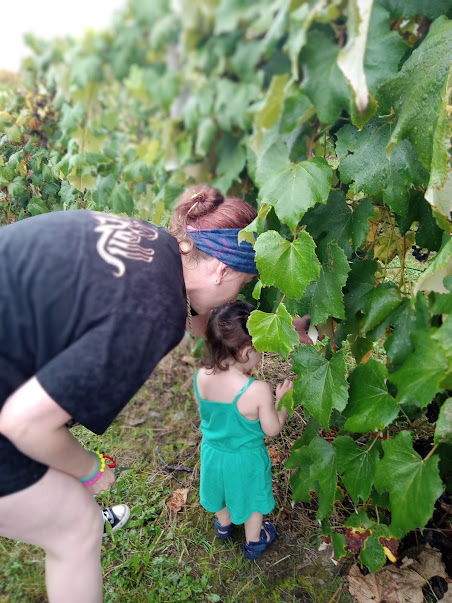
Building & Displaying A Nature Collection
Discovering Forest Collectables
Incredibly Easy Nature Program
FORAGING WILD FOOD FOR BEGINNERS
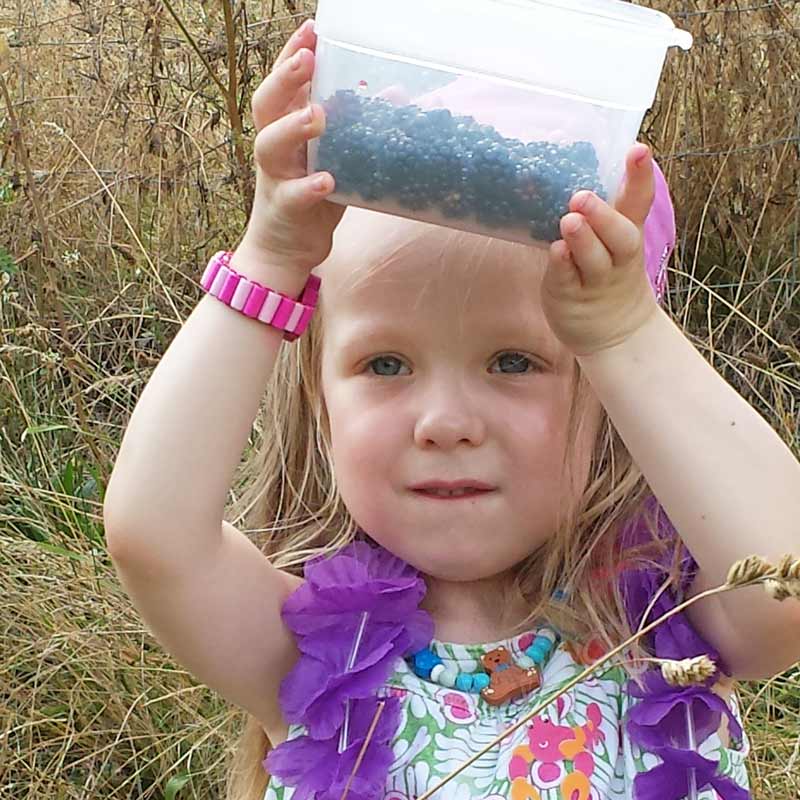
My little picky eater happily munches blackthorn berries from the hedgerows. She won’t touch a banana. Or an orange.But hand picked sourer-than-lemon sloes she gobbles by the handful!
What’s with that?
Part of it’s taste. Of course. But another big part of it – I reckon – is that she picked it herself.When she was tiny she would turn her nose up at shop bought blackberries.
But devour them when we went blackberrying.
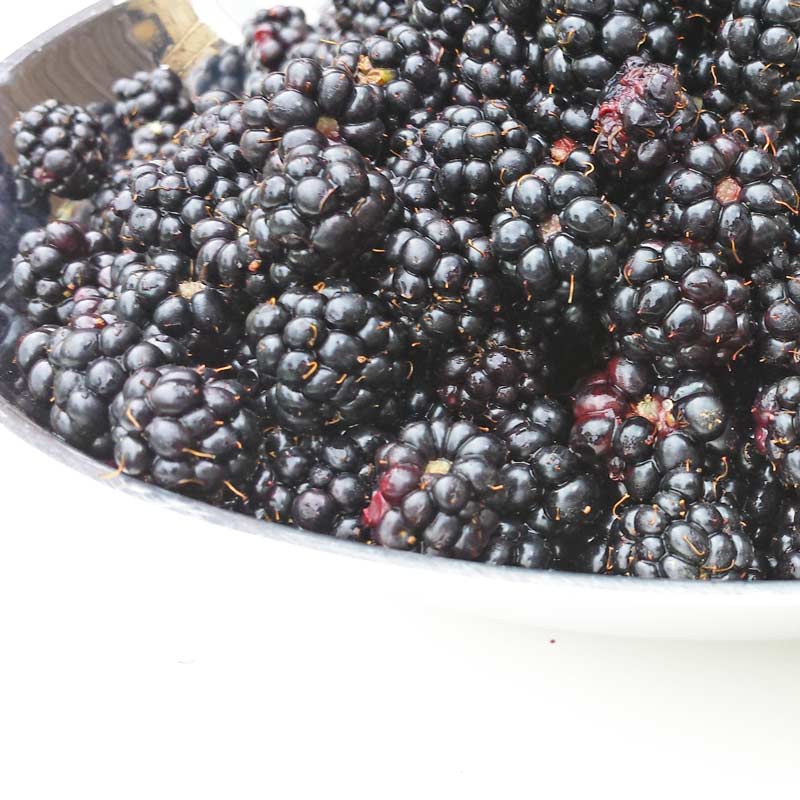
Maybe it’s some deep primordial instinct kicking in?
Foraging is a totally fab way to have a fun day out with the kids.
You get to be outdoors, tinkeringering and exploring.
Chatting away as you gobble yummy stuff.
And just slowing down.
But isn’t it all a bit complicated AND dangerous?
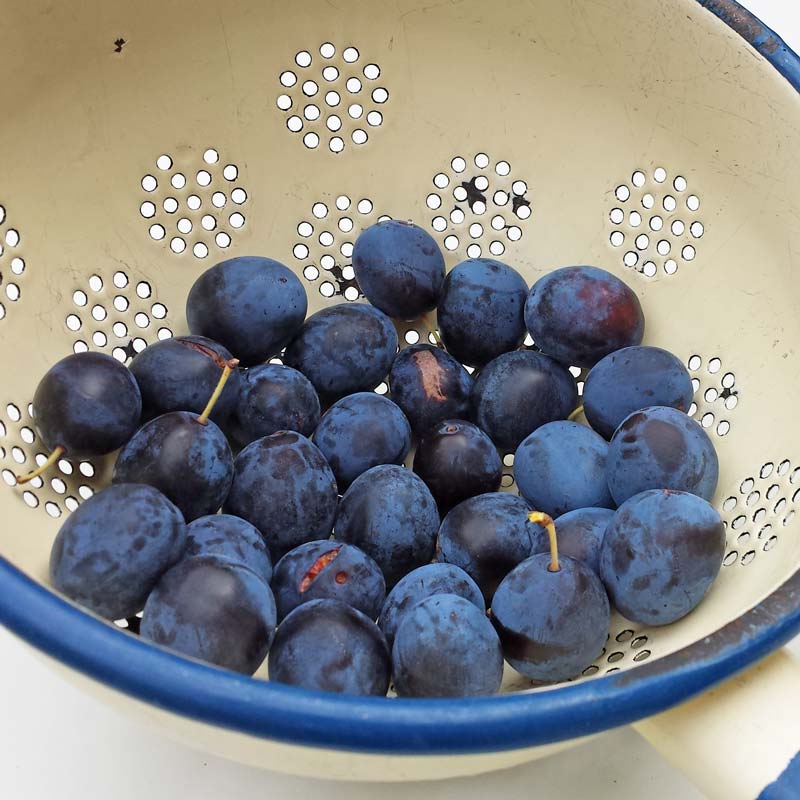
Honestly, not at all!
It’s much easier than you think to find yummy stuff in your local countryside. Plus ALL the stuff you can forage in autumn is packed full of the immune boosting vitamins the whole family needs to survive the winter. How clever is nature?!!
And as long as you and your kids follow these simple foraging tips it’s perfectly safe.
SIMPLE FORAGING TIPS FOR KIDS
Only eat stuff you’ve been told you can eat by a grown up
Only eat stuff if you’re really sure you know what it is – if in doubt don’t
Don’t eat stuff low down that a dog might have peed on – !!! – until washed at home
These are the foraging tips my mum taught me when I was little. And they are basically all kids need to know. Although, obviously with little kids you need to keep an eagle eye on what goes in their mouth.
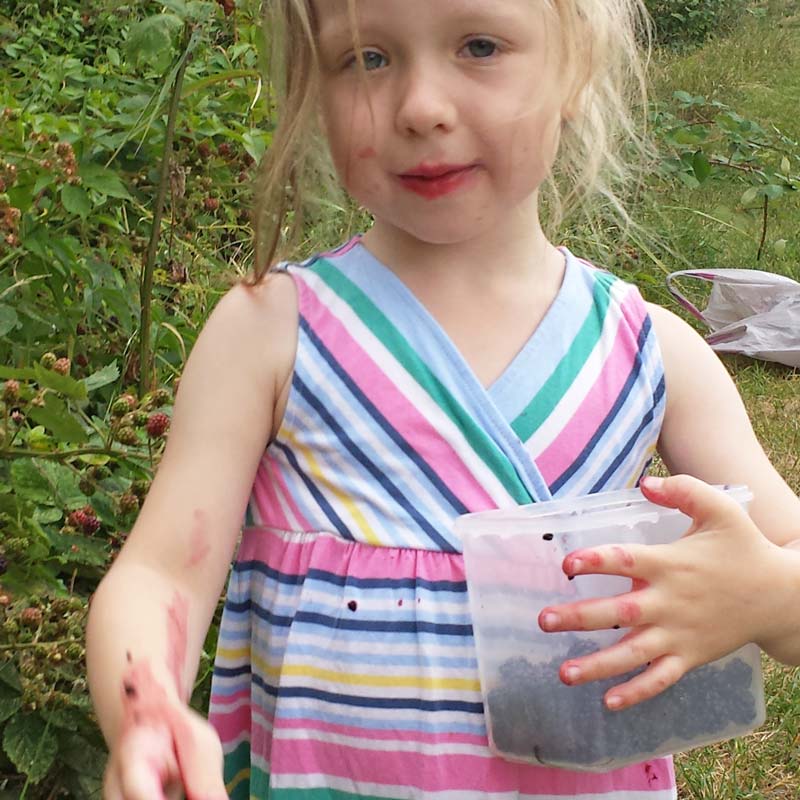
Well, I’ve detailed some of our faves below. And nearly all of these are amazing in jams and jellies and chutneys. Just borrow a jam pan (USA) plus a jelly strainer as they make it super easy to make your own.
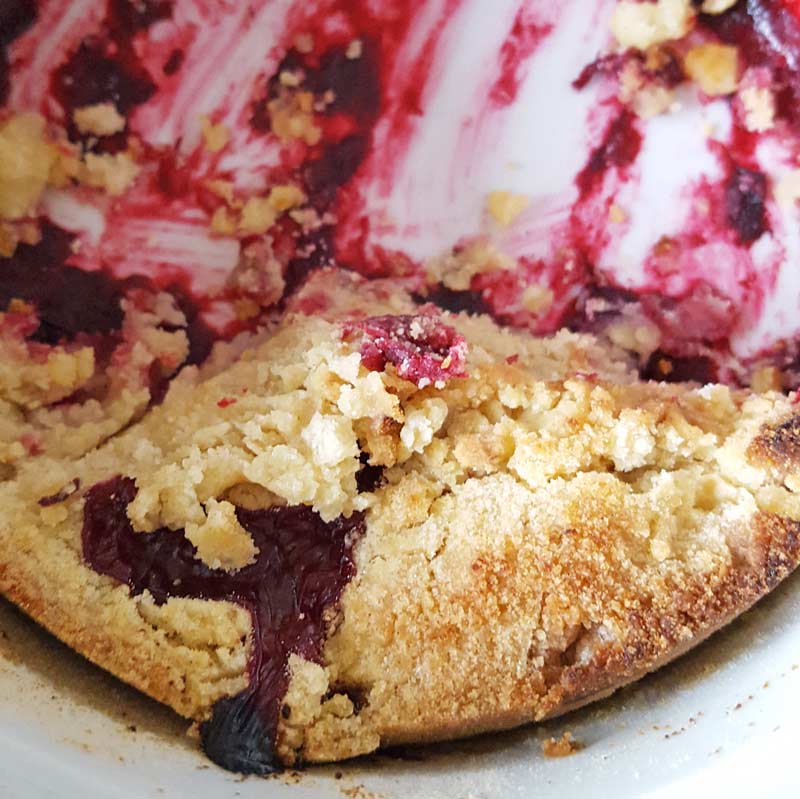
If you want recipes Nigel Slater is your man! His Tender book (USA) is full of foraged fruit recipes. It’s one of the few recipe books these days I use over and over.
Well, obviously it will vary depending where you are.
But these are our favourite things to forage as a family.
WHAT TO FORAGE FOR BEGINNERS
BLACKBERRIES
Blackberries are probably the easiest thing to forage as a beginner or with kids.
They’re everywhere. The local park. The woods. By the beach.
Just inviting little hands to pick and gobble.
You’ll find all the blackberrying tips you need here.
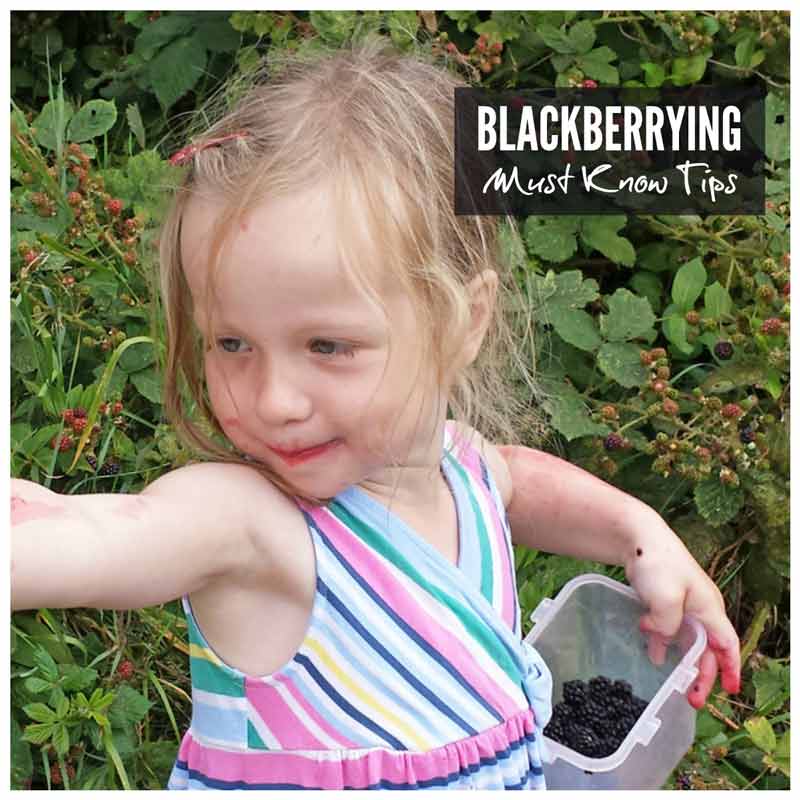
DAMSONS
These dark bluey jewels are like a small, dense plum. But more tangy and flavoursome. They’re brilliant in crumbles and pies.
But with chocolate they are divine!
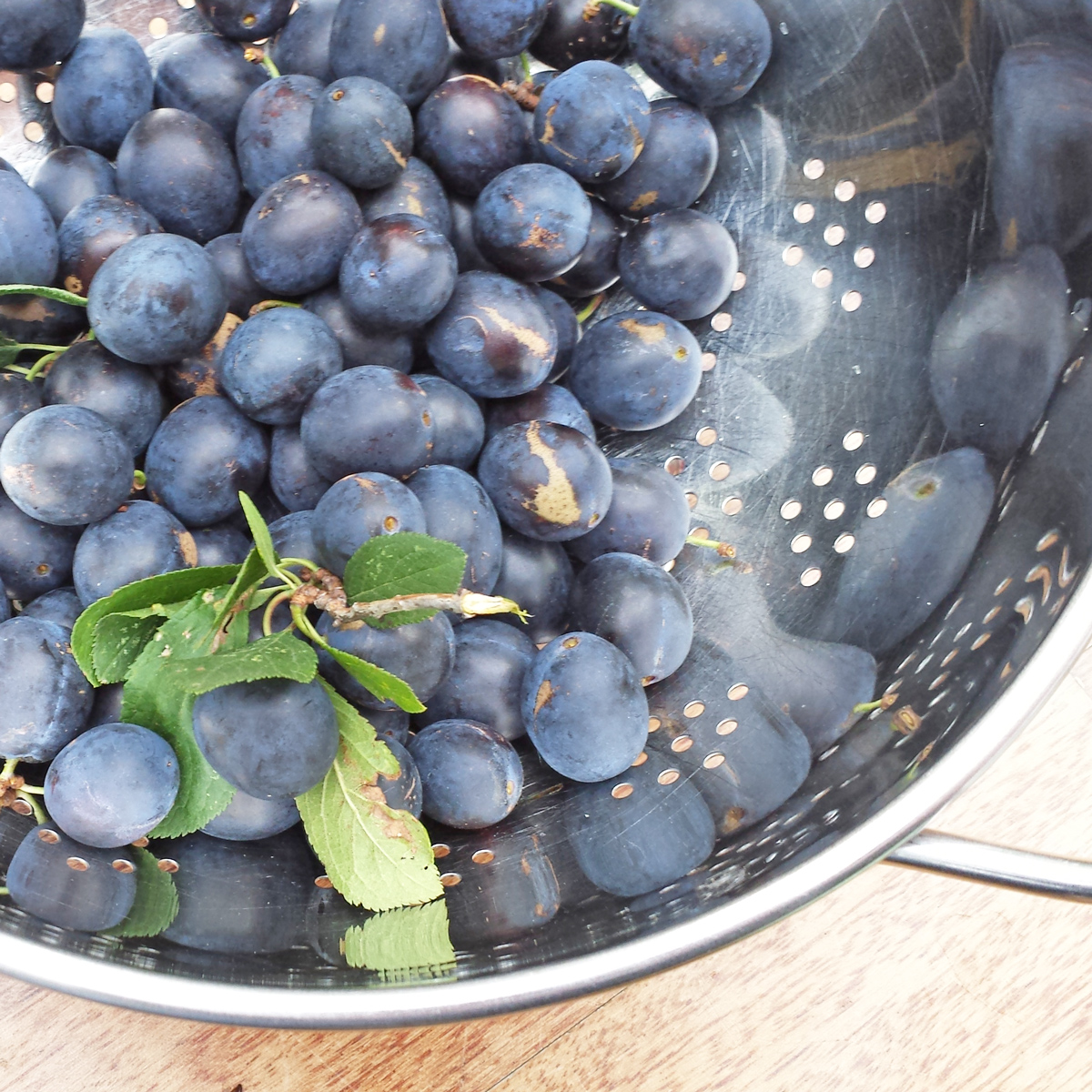
They do grow quite high in the hedges, so take a stick to bend branches down.
Or someone with long arms!
ELDERBERRIES
Elderberries are best eaten cooked.
And eating too many raw – and unripe – could make kids sick.
You want them black. Not green.
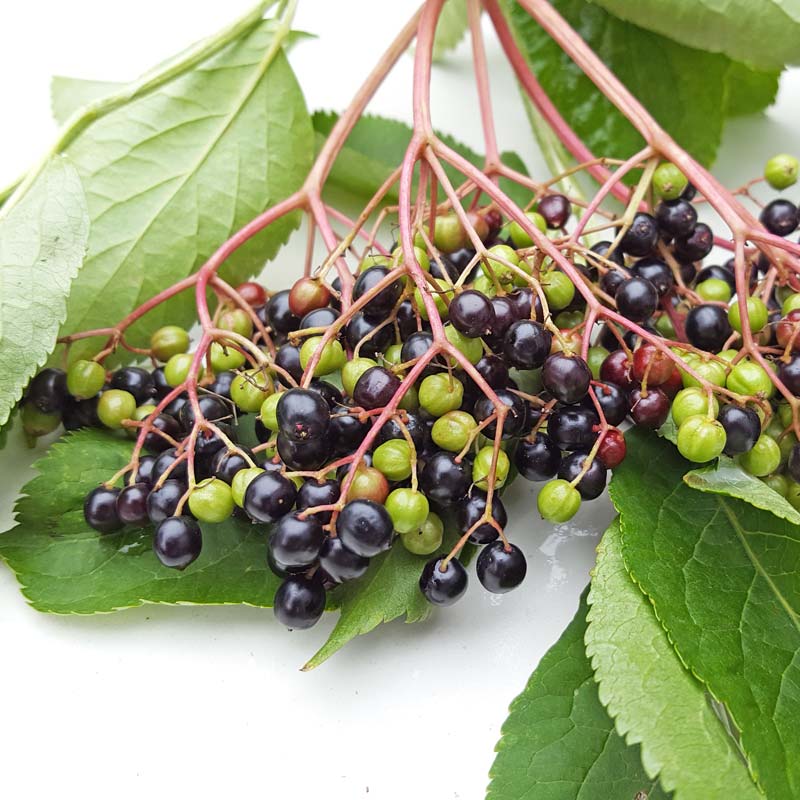
But these beauties are absolute super foods for fighting colds and sinus infections. You can add them to recipes with blackberries.
Or to really enjoy them make elderberry jelly …
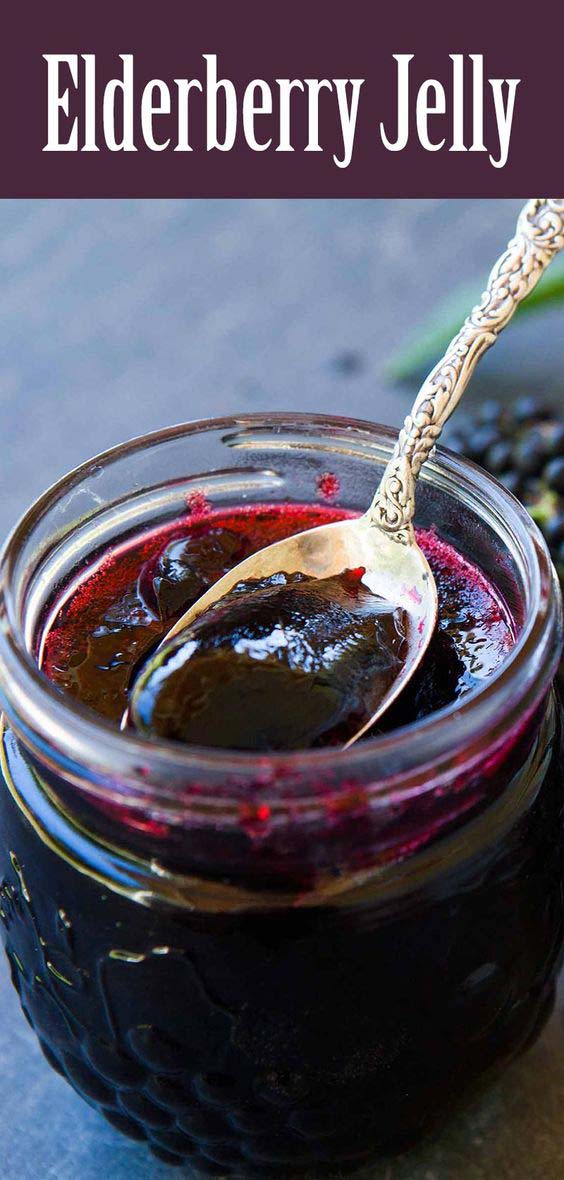
or syrup …

CRAB APPLES
There’s a crab apple tree in the tiny wood next to my parents house. And every autumn we get the whole crop. No one else seems to know their secrets.
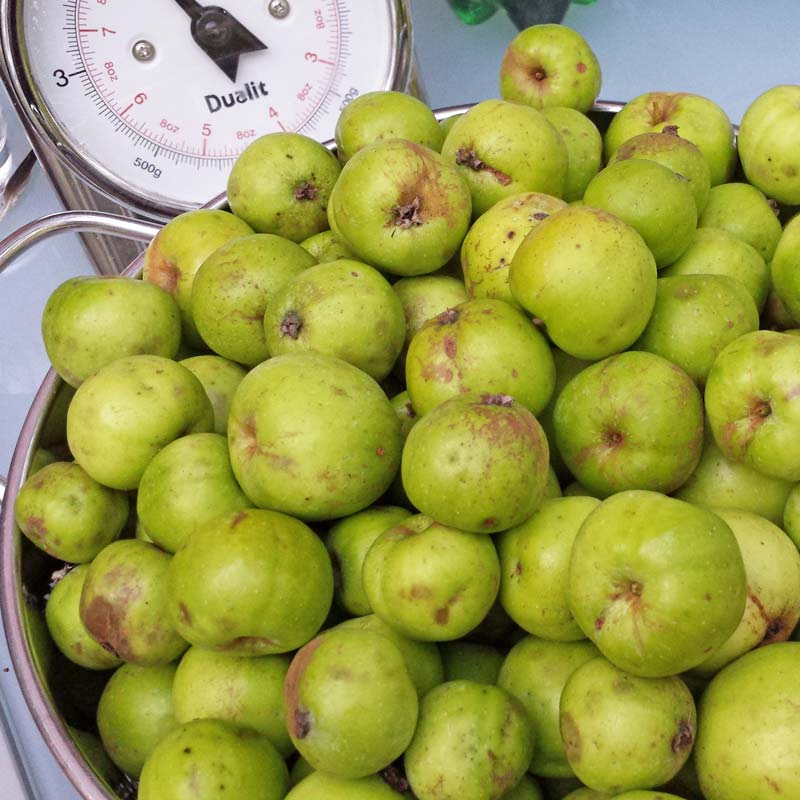
They are not pretty. They are sour raw. But they make the best jelly ever!
Yummy in tarts and cakes for kids. But also good with meat and cheese.
So there you go, everything you need to know about foraging with kids.
If you’re creative and really learn to watch the landscape, there’s quite a bit to harvest even in the dead of winter. Here’s a list of more than 50 things we’ve found to forage in winter, in a climate where temps dip to -25 part of the year.
One of the easiest to find, and most accessible options are rose hips which generally hold on the bushes all through winter. Staghorn sumac is another good choice, and it can be made into a lemonade-like drink (even in January).
GETTING STARTED
FORAGING WITH KIDS
FORAGING WITH KIDS
Foraging with kids is a great way to spend time with your little ones outdoors.
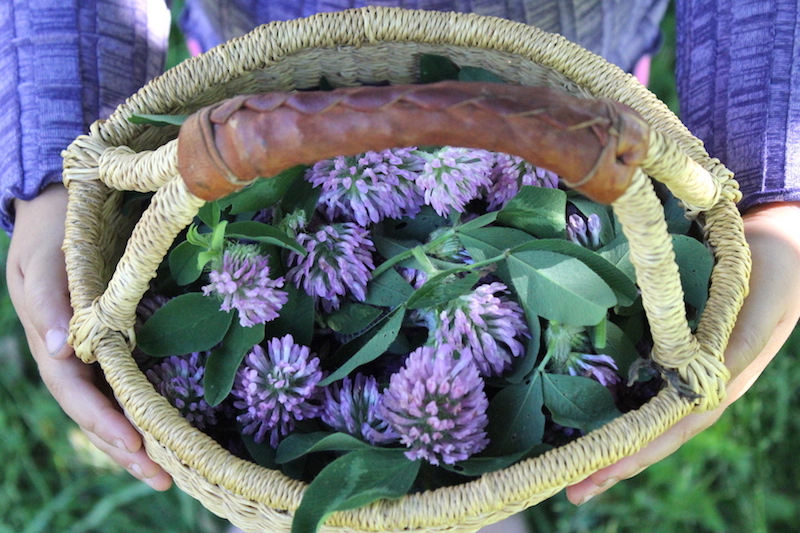
Kids are naturally curious and want to put just about everything into their mouths anyway, why not direct that towards tasty wild food? Foraging helps tap all that curious energy into nature exploration while teaching them valuable skills at the same time.
GETTING STARTED FORAGING WITH KIDS

If you’re a beginning forager yourself, start simple.
Edible flowers are a great beginning, and they’re delicious for kids and adults alike. There’s a surprising variety of edible flowers, both wild and cultivated. In many cases, you don’t have to look past grandma’s flower garden to find delicious “wild” edibles to peak a little one’s interest.
In the summertime, foraging is just a natural part of our daily routine.
When my daughter was born that didn’t change, and she began harvesting wild plants with me before she could walk. Little hands are naturally drawn toward bright colorful objects at their level, and I set my baby down in a patch of red clover with a basket.
A bit of guidance and she spent an hour carefully harvesting red clover blossoms and filled her harvest basket.
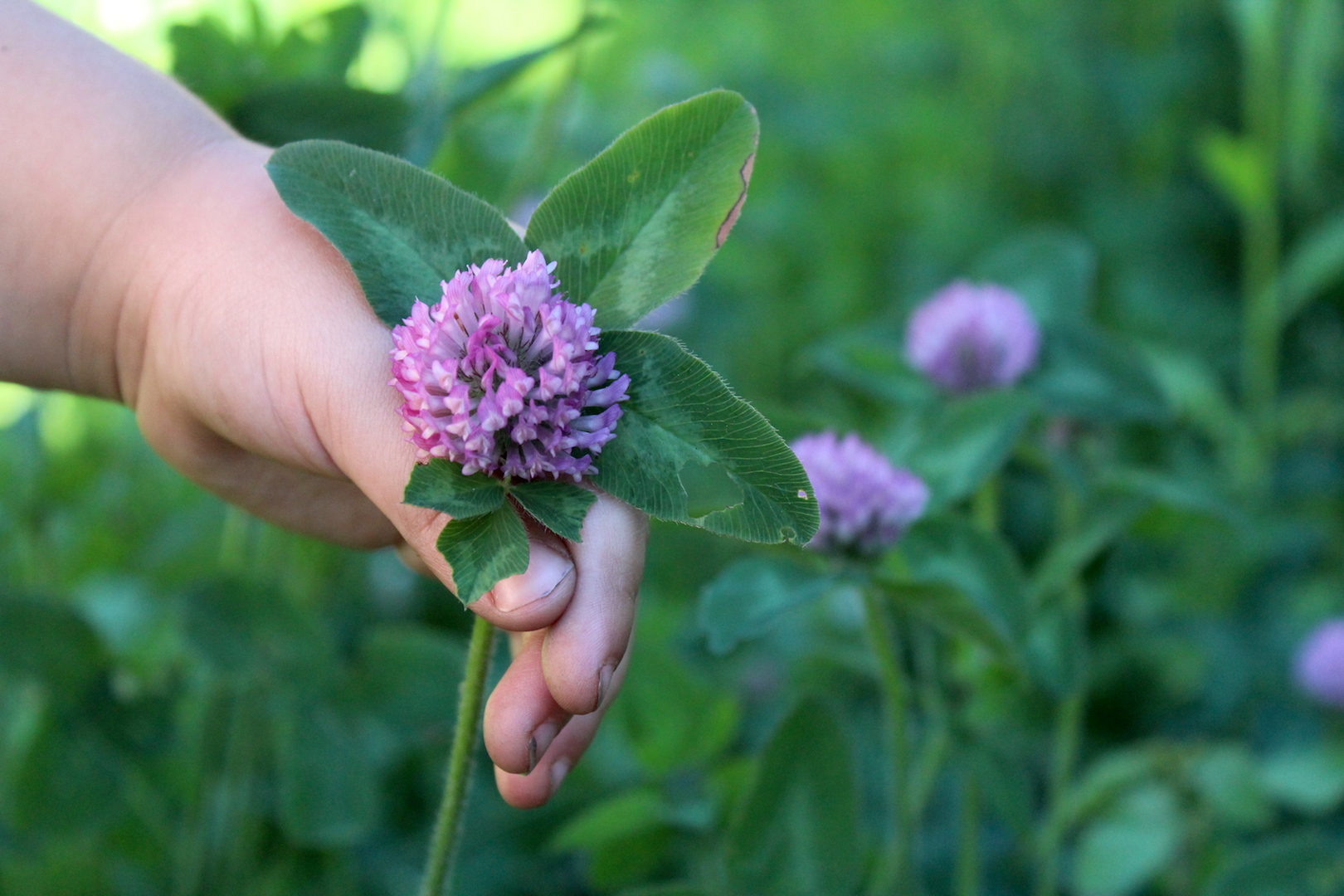
The following summer, the little ones could participate more fully and things got a whole lot more fun.
Add a bit of walking and talking into the mix, and children can actually express how much they love the idea of harvesting their own lunch.
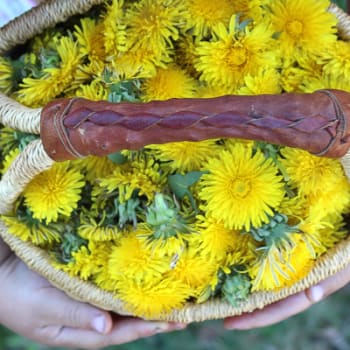
Everywhere we go she’d see flowers and ask, “Is that an eating flower mama?” That’s led to some wonderful interactions with friends and neighbors, especially when they’re in an older generation.
In a neighbors garden, she politely asked if she could eat the bee balm. The neighbor didn’t know that one was edible, and my little one showed her how to enjoy the petals.
The neighbor then took her on a tour of all the wild weeds in her garden that she used to harvest as a child.
She told her stories about harvesting jewelweed seed pods, that pop in your mouth as you eat them and taste like black walnuts. She let us sample her hosta flowers and showed us the best technique for eating daylily blossoms.
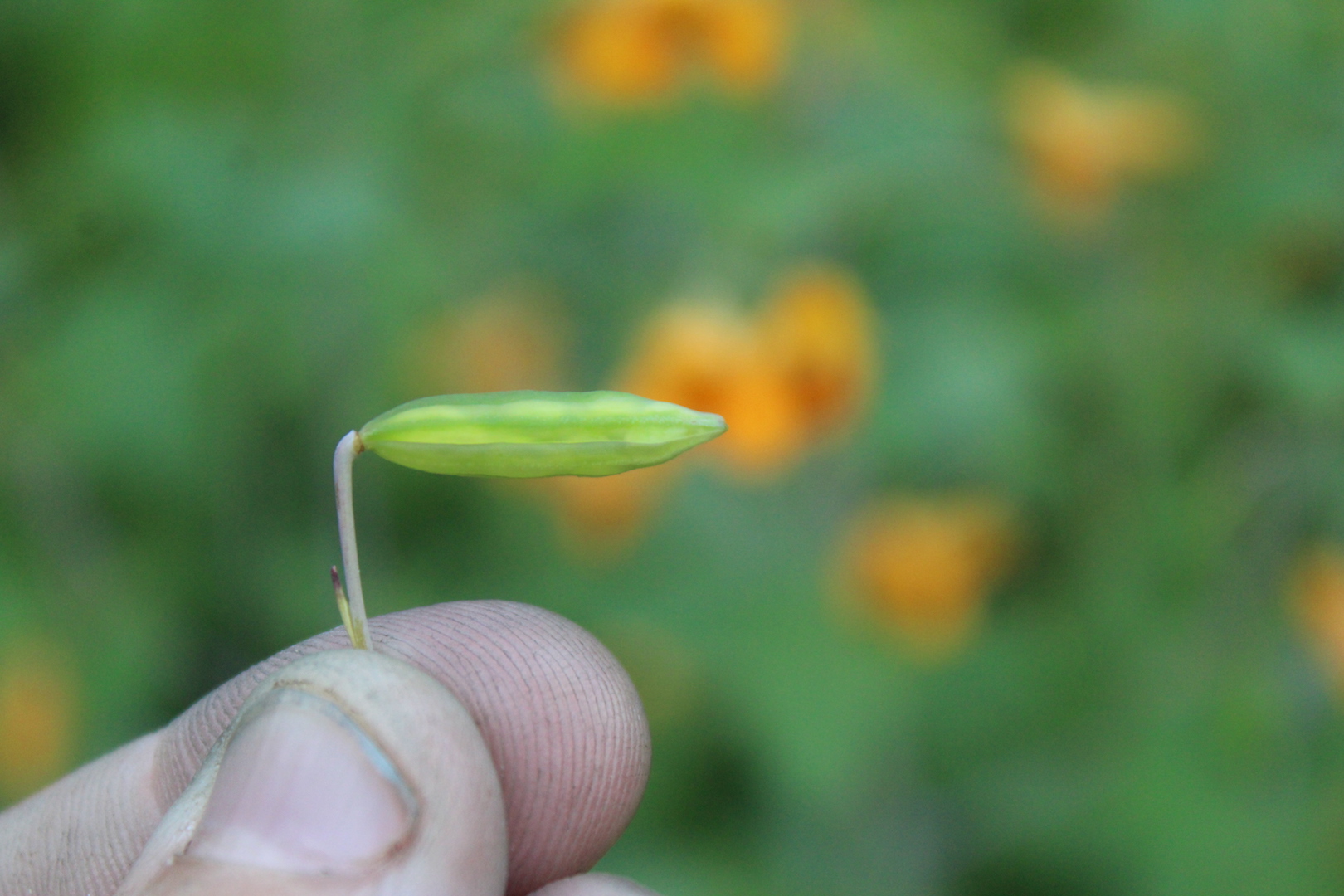
Edible seed pods of jewelweed, which taste like walnuts!
While flowers are an excellent place to start when you’re teaching the youngest foragers, it’s easy to quickly expand to more advanced crops.
Chanterelles began to pop out of the forest soil just after my daughter’s second birthday, and we went into the woods to harvest them together.
Foraging mushrooms with kids takes a bit more discussion, and it’s important to communicate that all mushrooms need to be cooked before you can eat them. Whether or not that’s strictly true is up for debate among mushrooms, but that simple rule allows for every last morsel to be checked over before it goes into a little one’s mouth.
I brought my newborn son in a backpack, and my daughter carried her favorite stuffed animal in a backpack too. I’d pause to teach her something, and she’d settle in to pass the lessons on to her stuffie. Here she is teaching her furry friend the finer points of chanterelle identificat
Once you’re ready to start introducing your kids to foraging, here are a few tips to get you started.
START WITH FAMILIAR PLANTS
When I say start with familiar plants, I mean start with plants that are a part of their everyday life.
If there’s a maple tree in the yard, try tapping it for syrup. Look for edible weeds in the lawn, that same lawn they run barefoot over all summer long. Things they see and experience every day will have more meaning than even the most exciting find 10 miles and a car ride away.
Simple things, like dandelion blossoms, can be made into all manner of delicious things with the right dandelion recipes. I make dandelion shortbread, dandelion honey marshmallows, dandelion gummy bears, and dandelion ice cream for my little ones. I even can up dandelion jelly from their harvests, so we eat a taste of sunshine all year round.
If they’ll put the time into picking the blossoms, there will be treats.
See the subtle bribe there? It’s all in the name of getting them outside and excited about nature (and foraging).
If you don’t have a lot in the yard, maybe it’s time to remedy that. Toss a handful of yarrow seeds here and there, or encourage forageable crops by converting a portion of the yard to more “wild” space.
Even if you’re in an apartment, there’s plenty of urban wild edibles to be found in sidewalk cracks and neighborhood parks.
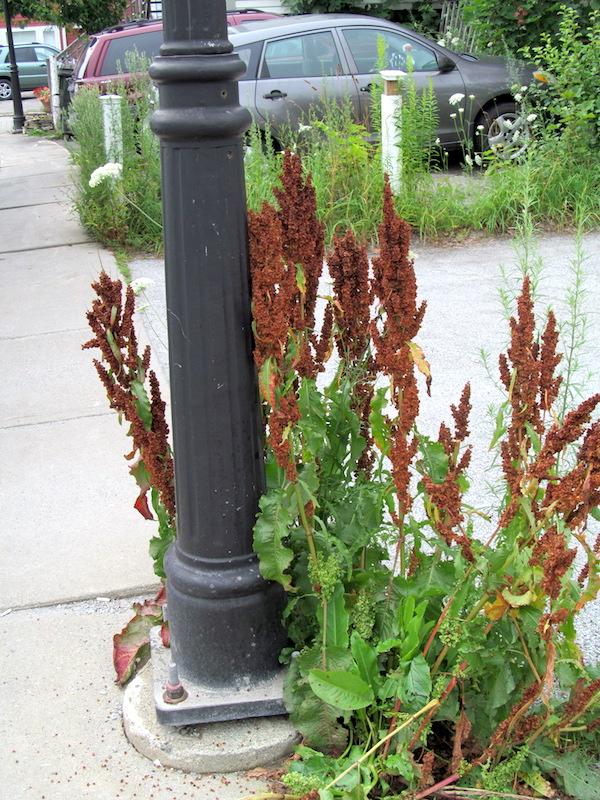
An urban patch of yellow dock growing around a light pole. The seeds can be ground into flour and a tiny bit flavors some tasty cookies.
CHOOSE SWEET AND TENDER EDIBLES
For the most part, everyone gets excited about foraging in the spring as the new growth bursts from the earth anew. The problem is, most spring greens are bitter and not exciting to young palates.
Don’t try to force it! Once a kid learns that foraging is just an excuse to shove bitter dandelion greens at them they’re not going to be excited about the adventure.
Just as you’re expanding their horizons, you need to expand yours as well so that you’re guiding them towards sweet, tender, and kid-friendly edibles.
Linden buds are some of the sweetest greens around, and they bring a smile to my little one’s face with ease. While dandelion greens might not be a good choice, the flowers themselves are tasty if you use them to flavor kid-friendly treats like dandelion ice cream.
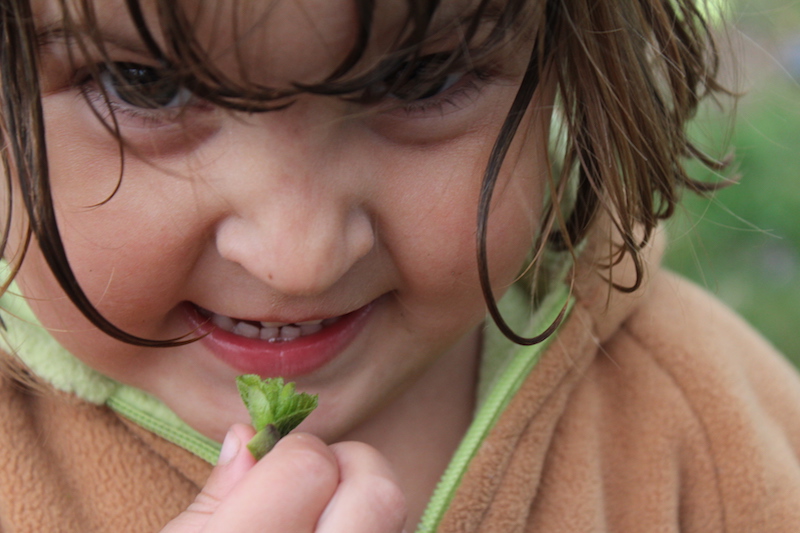
FORAGE FOR KNOWN FOODS (LIKE BERRIES)
When kids learn that the woods can be their grocery store, providing foods they’re familiar with already, that’s almost more exciting than learning to identify strange wild weeds. Edible wild berries are some of the absolute best choices when foraging with kids. Many are incredibly easy to identify, like wild raspberries.
When I led my 18-month-old son over near the raspberry patch, I didn’t have to tell him twice. He knew his favorite food when he saw it, and after I picked one off and put it in his hand it was like his whole world expanded right before my eyes.
To see the look on his face, you’d have thought I showed him an ice cream bush, not a wild raspberry. I can only imagine his thinking, realizing that raspberries just grow right out there for the taking. Simple things we take for granted are really magical when the whole world is new.
Once they know you’re showing them good stuff, kids are more liable to trust you when you try to introduce them to new exciting wild edibles.
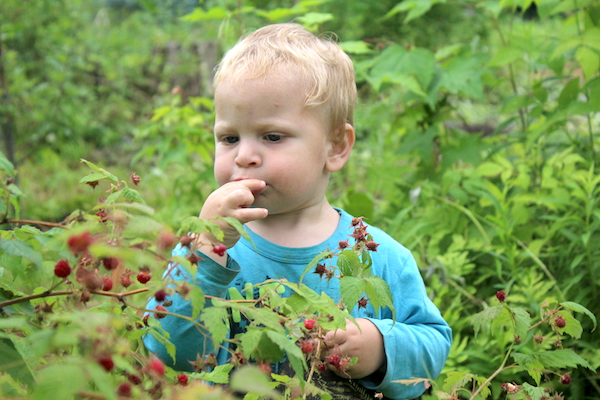
MAKE FUN FORAGED TREATS
Beyond just tasting wild edibles in the field, the adventure can continue into the kitchen with kid-friendly edibles. Last spring we baked a Japanese knotweed pie, and the little ones couldn’t taste the difference between it and the rhubarb pies from the week before. Similarly, wild hawthorn lollypops were a huge hit.
While sweets are an obvious choice, you don’t have to pack on the sugar to make things kid-friendly. Think warm, savory comfort foods. Dice up some wild ramps into homemade mac and cheese, or make a warm and creamy chanterelle risotto.
Still, when all else fails, make ice cream out of it.
Really, you can make ice cream out of almost anything. We made chanterelle ice cream this summer, and months later when you ask my daughter what her favorite ice cream flavor is she’ll sill enthusiastically answer “Mushroom Ice Cream!”
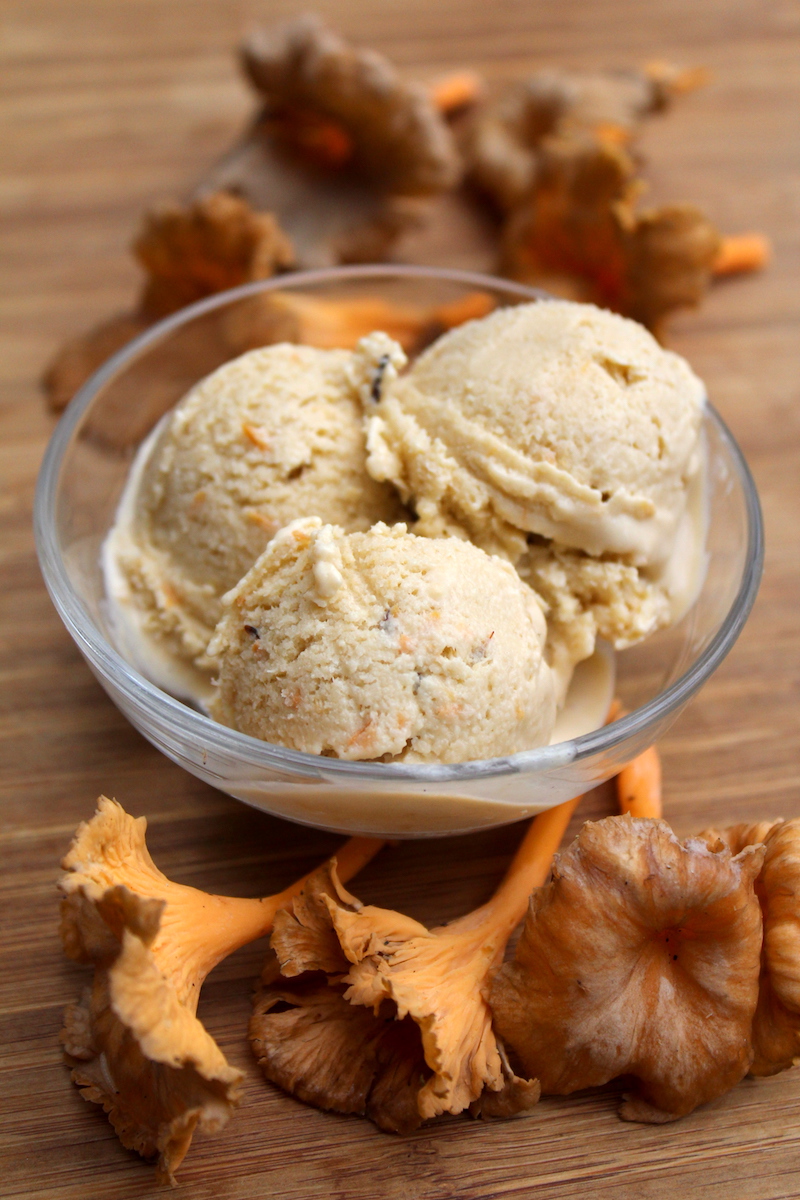
DON’T UNDER ESTIMATE THEIR TASTE BUDS
I know, all I’ve been talking about thus far is making sure foraged foods are sweet, tender and kid-friendly.
That’s true… to a point.
Don’t let your adult bias keep you from sharing some more exotic flavors with your little ones. I try to use a bit of Huck Finn psychology whenever I can. While I’m not convincing them that panting a fence is the best thing ever, I am leading by example trying new things.
I made a big show of how tasty dandelion coffee is, and my little one couldn’t wait to try it.
It tastes an awful lot like coffee, bitterness included, but she drank her whole cup. Maybe it was the fact that she could have her own caffeine-free cup and share coffee time with mama, or maybe it was the excitement that she harvested, cleaned, and processed the roots herself…but the bitterness was no obstacle.
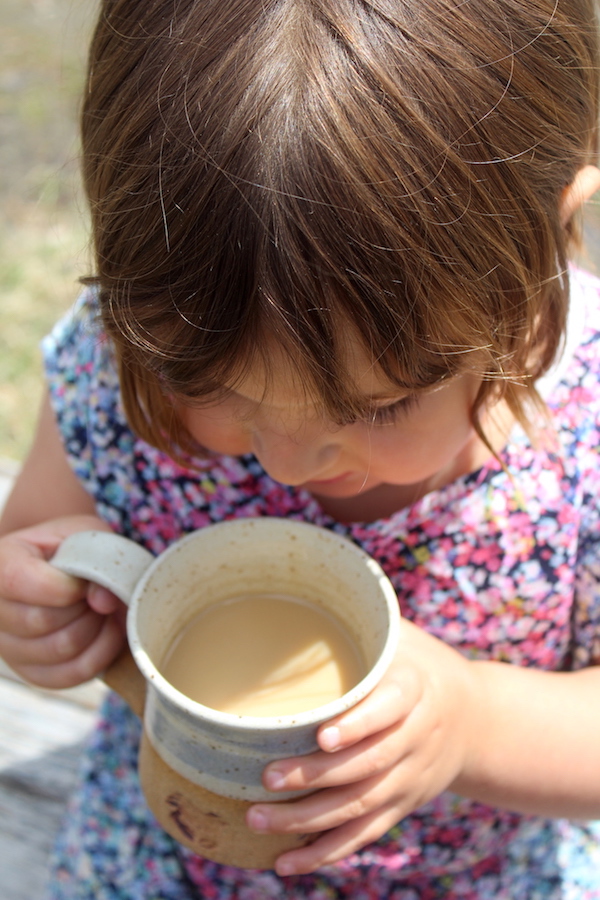
FORAGE IN KID FRIENDLY LOCATIONS
The adventurer in me wants to stop the car every time I see a patch of something tasty and exciting, but that’s just not an option with little ones.
I passed up a patch of wild asparagus because a narrow strip between railroad tracks and the highway is just not a good foraging spot period, let alone with kids. Alone, I’ll admit I’d be all over crawling down a ravine or foraging in other semi-hazardous locations.
I really rein in that impulse now that I’m foraging with kids.
More often than not, if we’re going to go out somewhere to forage I choose somewhere that’s stroller friendly. That allows for snack storage and is a bonus carrier in case we find a big patch of something exciting.
An old rail trail near our home is the perfect spot, and last summer we found all manner of wild berries, cattails, wild ginger, tinder polyspore mushrooms, and several dozen species of wild weeds.
You don’t have to go too far off the beaten path if you keep your eyes open…
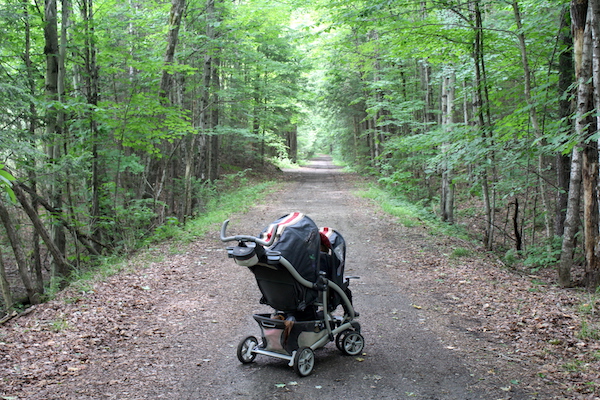
One of the easiest to find, and most accessible winter options are rose hips which generally hold on the bushes all through winter. Staghorn sumac is another good choice, and it can be made into a lemonade-like drink (even in January).

Winter foraged rosehips are easy to spot, even in deep snow.
Lastly, in the winter and early spring, don’t forget about syrup!
There are nearly 30 trees that can be tapped for syrup, including maple, birch, ironwood, linden, and many more. Even if you don’t have maples nearby, there’s likely a way to make syrup where you are.
ONLY FORAGE PLANTS YOU’RE 100% SURE YOU CAN IDENTIFY
While this should go without saying, whether you’re foraging with kids or not, only eat plants you can positively identify.
If you’re not sure about something, say so. Kids need to know that even parents are cautious when it comes to identifying plants, and I’ll make a big show of collecting something that we can all go research when we get home.
We’ll sit down with the identification books together and go over the features of a particular plant piece by piece. It’s a good exercise for everyone, adults and kids alike.
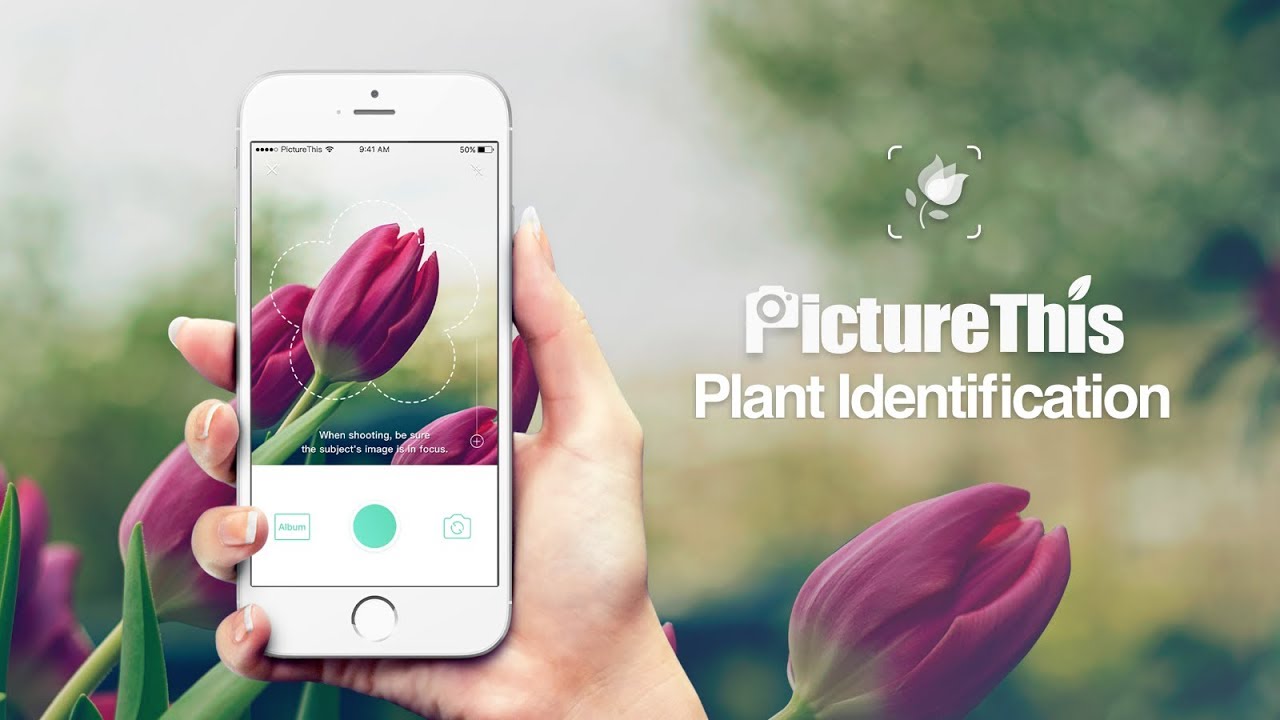
The "Picture This" program (app) is primarily a plant identification and care tool that can assist with general plant and tree identification for foraging, but it is not a dedicated foraging app and should be used with extreme caution for wild edibles. The core features are designed for gardening and houseplant care, not specifically for finding and safely consuming wild foods.
How "Picture This" Works for Identification
Photo Identification: Users take a picture of a plant, and the app's AI identifies it from a database of over 400,000 species.
Accuracy: While generally accurate (around 97% to the genus level in some studies), identification apps can be "way off" at times.
Detailed Info: It provides the plant's name, detailed facts, scientific classification, and symbolism.
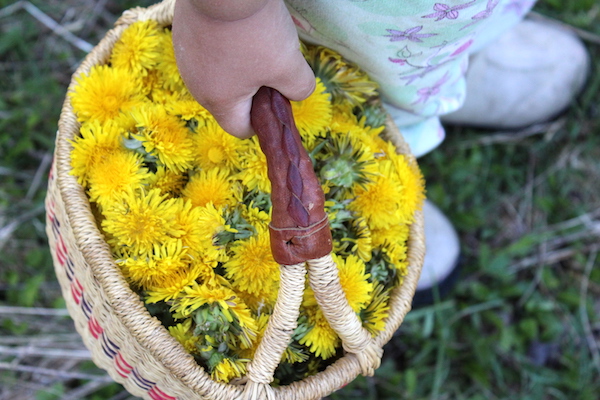
DON’T FORGET TO HAVE FUN
I know this one maybe seems obvious when working with kids, but I’ll be honest that I struggle with it. I get focused on searching for a particular plant, or harvesting enough of something to make something really special…and I forget to make time for the simple joys of finding snacks in the wild places of your yard and community.
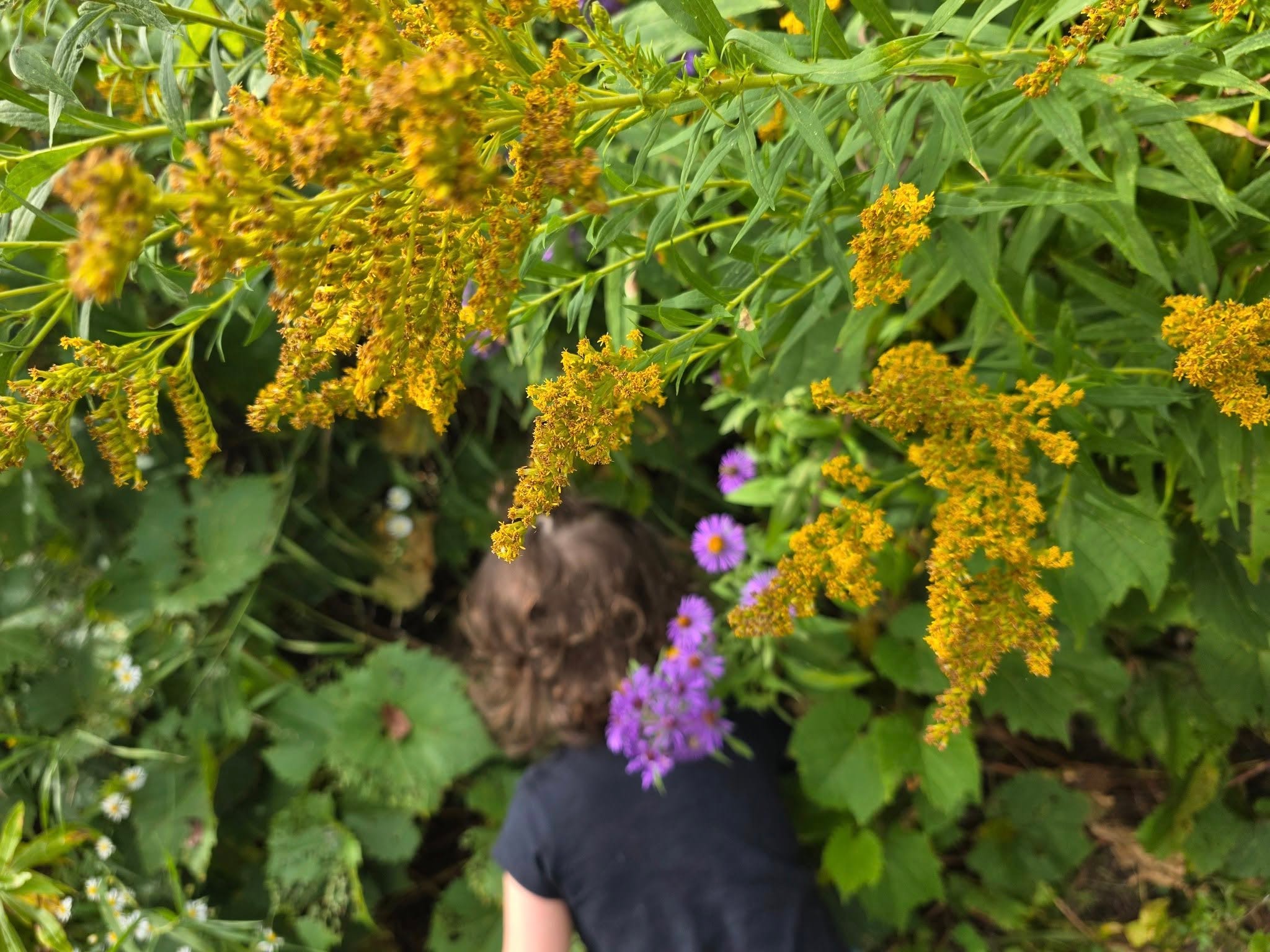
How to Forage some edibles or Berries
Spying for Snacks- An Edible Hands on Botany Experience
Our children learn more from what's hapenning outdoors during the foraging experience as they ever will from their school books. The multi-level process of discovering and learning about the environment with all their senses brings them close to the way the they learned so quickly as babies. But its also a way to have some father robust family time. So make it fun for them to interact and learn to cherish and protect all that nature has to offer.
Foraging is another word for identifying, and eating plants that grow wild. Plants can be gathered to help heal injuries too as well as a whole range of other uses. A wild chemist if you will.
At first, we focused on foraging for medicinal plants and food as a lesson in self-sufficiency and survival. We forage for rosehips, wildflowers, chamomile, raspberries, and cranberries.
Whether you’re homeschooling or not,
Do some local research to find five easy plants to forage with kids. Then take a walk and try urban foraging in your own neighborhood. We keep it casual when we're learning about foraging northern greens, herbs, and wildflowers.
Instead, we just head outside with our sunhats, wilderness survival packs, baskets, and bear spray.
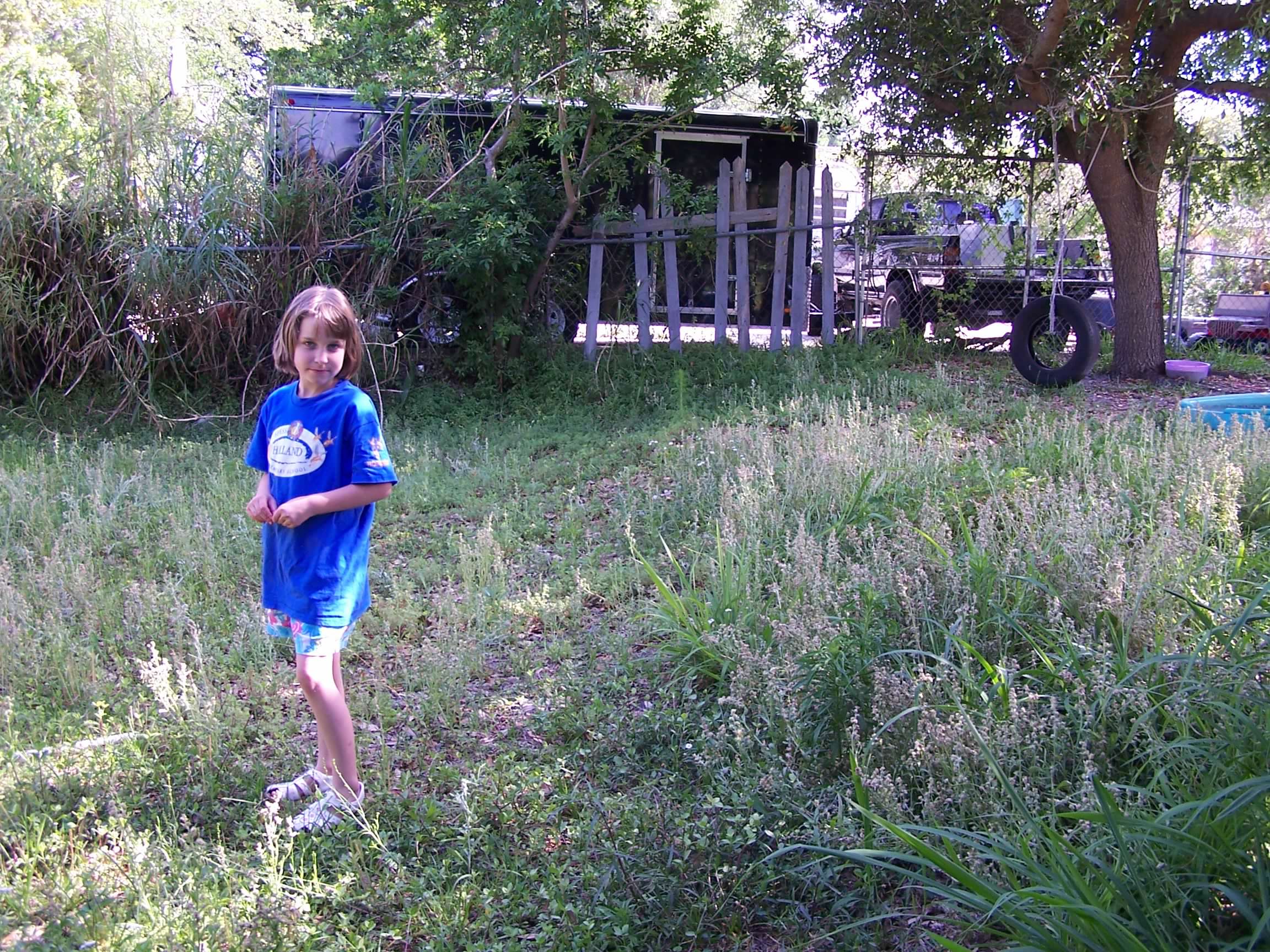
(By the way, we forage all year round. But in the autumn, we get distracted by the beautiful changing colors of our leaves. That's why I created this fun fall leaves printables pack and study tips. Use them with your 3-to-13 year olds.)
FORAGING SAFETY FIRST
Don’t forget to teach outdoor safety skills first when foraging in the wild with kids.
Teach children to never eat any berries, greens, mushrooms, fungi, etc. until they check with you.
And remind them that sometimes just parts of a plant that are dangerous or poisonous. For example, rhubarb leaves are poisonous yet the fruit may be safely eaten in jams, preserves, and pies.
And while we’re talking about foraging with kids, remember to ask your kids - Who else is foraging for wild edibles? Other animals.
Learn about the predators in your area. And remind your kids to be aware of animals while foraging in the wild. Teach them to keep an eye out for woodland animals including deer, bear, and wild fowl.
#1. Sensory Science
Consider foraging a science learning opportunity for even your littlest learners. For example, use it to teach preschoolers and kindergartners about the seasons.
Keep it casual, and talk about how it’s hard to pick leaves, berries or flowers in winter. Show them the buds or berries that are in season in the spring or summer, and point out which leaves or fruit is better in the fall.
Foraging allows you and your kids to use all your senses. Smell that? It’s mint. Hear the rustling sound? That means acorns will fall soon. See those rosehips? Time to pick them for jelly.
From a brief lesson on photosynthesis to full-blown science projects, use foraging to teach your kids science basics and beyond.
#2. USE MATH & CHEMISTRY TO MAKE HERBAL TEA AND JAM
Math comes into play in most areas of life, including foraging.
Calculate out loud when you’re deciding how many shoots, buds, stems or leaves to gather. Talk it over with your school-aged kids.
So just how many rosehips do we really need to make rosehip jelly? How much wild chamomile should we gather to dry for chamomile tea? What ratio of mint leaves to cups of water makes the tastiest tea?
And if you use a dehydrator to save leaves, wild herbs or petals for tea through the winter, you'll get the opportunity to teach even more math! For example, estimation, ratios, weights, and volume.
Children bored by workbooks might make more of an effort to understand math lessons when applied to harvesting and preserving what they foraged.
#3. LEARNING BIOLOGY & SELF SUFFICIENCY
Foraging has long been a necessary survival activity for people through the ages. Early North American settlers learned to identify medicinal roots and herbs in the new world from the indigenous people. And pioneers, mountain men and women, and homesteaders often foraged for food and medicine – they had to in order to survive.
Do some research at your local library to identify the wild plants and foods foraged in your area over the years. l also use biology in the field as we learn about unusual local flora and fauna. And discuss the unique qualities of that habitat that harbors and provides the wildlife food chain. your area will host both the plantlife and the animal life to create a balanced natural home for all. Why do the plants grow there and what draws the wildlife to that area?
Although some plants may be native to your area only, others may be found in other countries or even on other continents. When you’re out gathering with your kids, ask some questions to get them thinking about the world at large, as well as your neighborhood’s place in it.
Feul their curiosity with questions like
Why does this grow here?
Where else does this grow?
How is it different in other parts of the country?
For example, we have beautiful Spruce trees (Spruce Tips are delicious in spring) and Labrador Tea here in the Northwest Territories. Yet they differ from those found the Yukon and Alaska, to the west of us.
Once you head indoors, open your laptop to discover other areas where your foraged goods grow. Depending on your children’s ages, read about them, plot the places on a map, and note the similarities and differences.
If your kids like to cook, try a recipe from another country. For example, this Scandinavian Chicken with Rosemary and Juniper recipe could make a special family dinner.
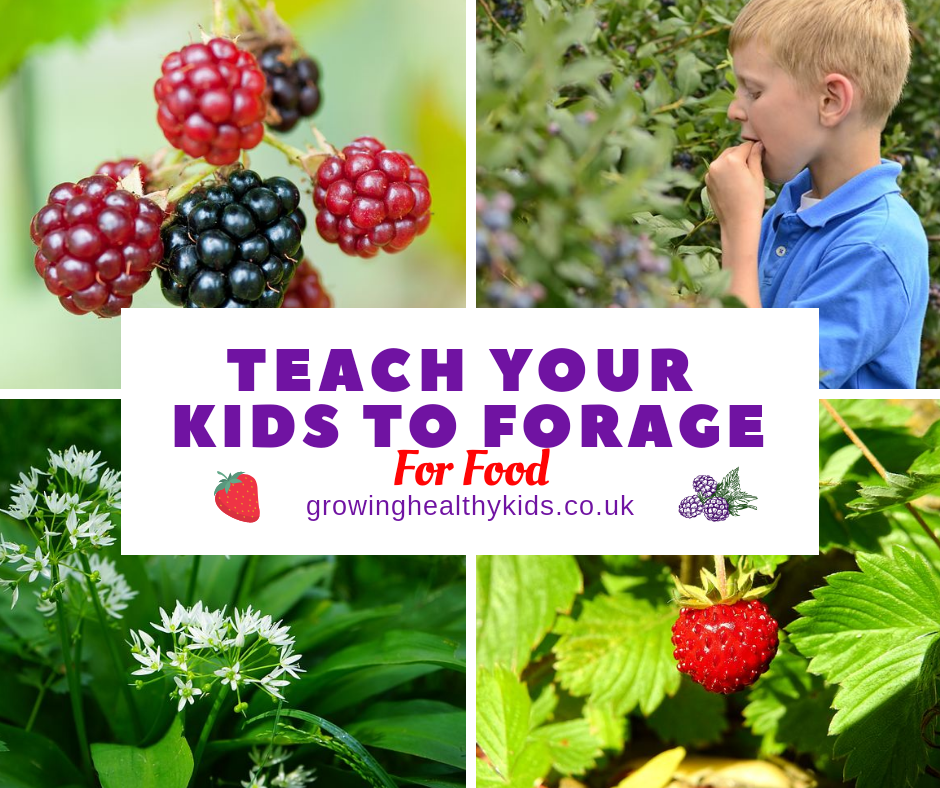
Teach Your Kids To Forage – It’s amazing what’s out there.
I have always been a forager before I even knew what that meant. I would walk the dogs for miles through the woods and along river banks while we munched our merry way.
I never thought of it as foraging, it’s just something we did as soon as I learned to walk.
I loved those walks and as soon as my kids were born I knew I had to educate the in the wonders of the outdoors.
I wanted to know more, so I could teach them to learn more, find more and use more.
Ok that sounds a bit airy fairy, but in these scary days of global warming, over population and water shortages amongst a whole range of disasters that could fall on us at any moment.
I do feel NOW is the time to get to educate our kids and really get to grips with this under used resource.
BUT, There are a lot of things that can hurt or make you very sick out there, so it takes a little knowledge and care to get the best from Mother Natures Larder.
This is our forage list of regular food we gather, there is so much more to experiment with but it’ll get you started. Just click the picture below for your own copy.
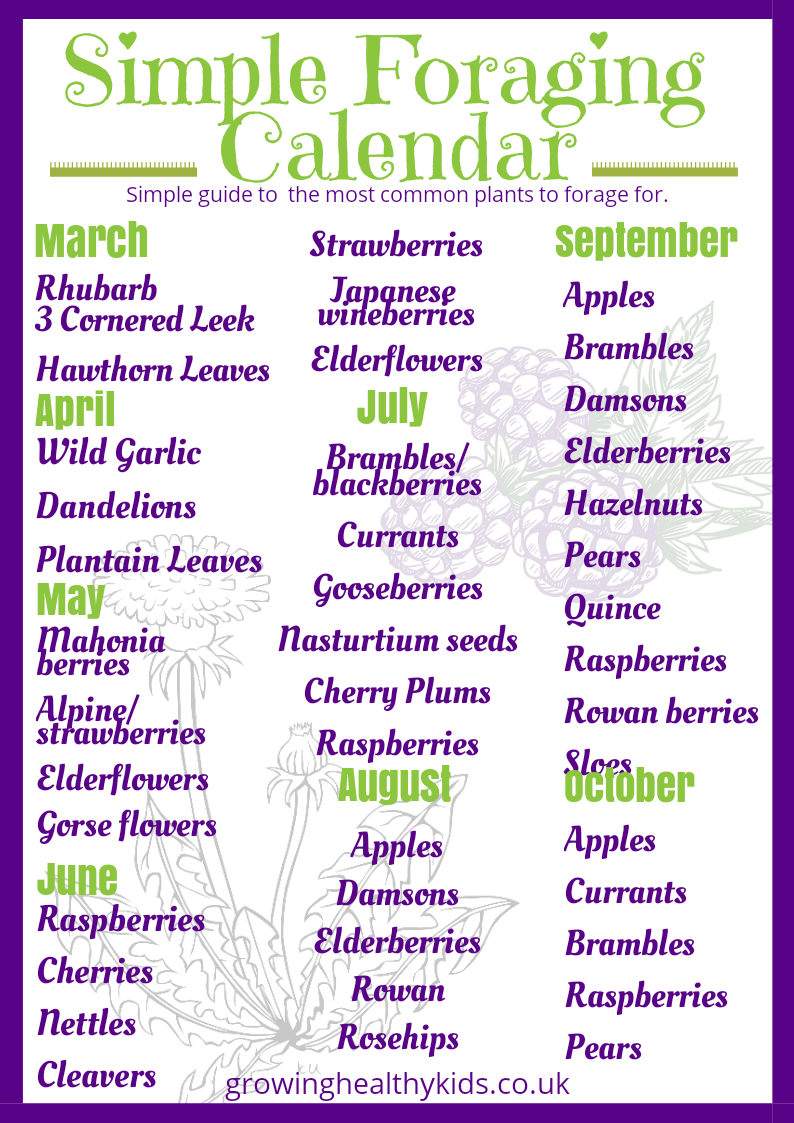
People have survived off this stuff for countless generations long before supermarkets and plastic wrap came along and some places on the planet still do.
So give it a chance, the worst that could happen is you get a FREE meal!!!

Why Should You Encourage Your Children to Forage a Snack?
Wild Herbs for Little Foragers
It can help to cement the bond between you and your kids and the natural world around you.
It’ll give your kids a chance to fall in love with nature from a different point of view. Nature suddenly has a use and a function not just pretty to look at.
Foraging can introduce you to a world of edibles that are generally highly nutritious and full of flavour. According to Jo Robinson, from Eating On The Wild Side. “Dandelions are a Super-food” and have 8 times more antioxidants. Twice the amount of calcium, 3 times more vitamin A and 5 times more vitamin E” Unbelievable for a weed!
It’ll help your kids experience the flow of the seasons and pay more attention to them.
Kids feel more in control of the world around them. Foraging can help make the world feel smaller and less intimidating as kids understand and recognise the leaves and plants around them.
What Is A Good Age To Start Foraging With Your Kids?
There is no minimum age to begin foraging with kids, the younger the better. I introduced my first son to foraging by letting him play with and then nibble on dandelion leaves. He’d sit in his buggy and quite happily munch his way through anything I gave him.
When should you forage?
As soon as the first flush of Spring shoots appear, the foraging seasons starts.
Pay attention to the tiny green shoots you see. Watch them unfurl and show you their leaves so you can begin to work out what these wild plants look like at all their stages of growth.
Once you identify plants you can then find out whether it’s edible and what its uses are. This is the book I refer to time and time again but you’ll need to find one that reflects your country and area.
Foraging with Kids: 52 Wild and Free Edibles to Enjoy with Your Children
As you learn to recognise plants, you’ll find out what plant parts are only safe to eat, or which ones taste best when eaten during a certain stage of their growth, while others can be eaten all year-round.
It all sound complicated but don’t worry. Start with a familiar plant such as the dandelion and explore its uses and flavors. Once your comfortable with one plant its easy to spot others you can look into as you go.
What to Collect
Find a local foraging book or a local group to join to learn as much as you can.
What to Bring when you forage.
A good strong basket or bag to hold your yummy goodness is a must although for soft berries a tupperware tub would be easier.
This is the one I use, I was given it for my birthday and I love it!! We gather wild edibles for our rabbit too so it gets used everyday.
Ulster Weavers Foraging Foxes Packable Bag
I’ve also found gloves for kids is a good idea to avoid being stung or scratched.
Good sturdy wellies can help too if your going to be walking near nettles etc.
You also need to set some ground rules with the kids. Make sure they’re aware the MUST have an adult with them at all times before they pick ANYTHING. Think about what kind of place your visiting, will there be a river to stay away from, do the kids need to stay beside you or is there an area you want them to stay inside. Set this out before they get out.
You could also make a Nature Journal and use it to draw and record your foraging results. Information you’ve learned and record the location of any fantastic finds so you don’t forget next year.
Bring some drinks and snacks to keep energy up. It’s better to wash your foraged findings before eating so bring something the kids can snack on.
You could also try to find an app on your phone to help you identify plants, see if you can find one for your area.
After Harvesting
Now you and the kids have foraged and collected some wonderful plants that you are sure of, now what?
At home, wash your goodies gently. Then munch them all up. Its amazing what kids will eat if it doesn’t look like conventional food. You might also have to prepare the fruit etc for cooking if your making jam etc.
Recipes
Why not try a different recipe with your edibles. Here are some recipes that they will love:
Dandelion Flower Fritters via Mountain Rose
Make dandelion jam.
Make wild garlic pesto.
Some tips of where to start if your still unsure.
Find a local club or group to join to build your
Just start small. If your family only explores, identifies and works with one plant a month thats still 12 plants you’ll know next year that you don’t know now!.
Ok so we have covered lots of information on;
-Why should you forage
-When should you go
-What you need
Now lets look at some examples.
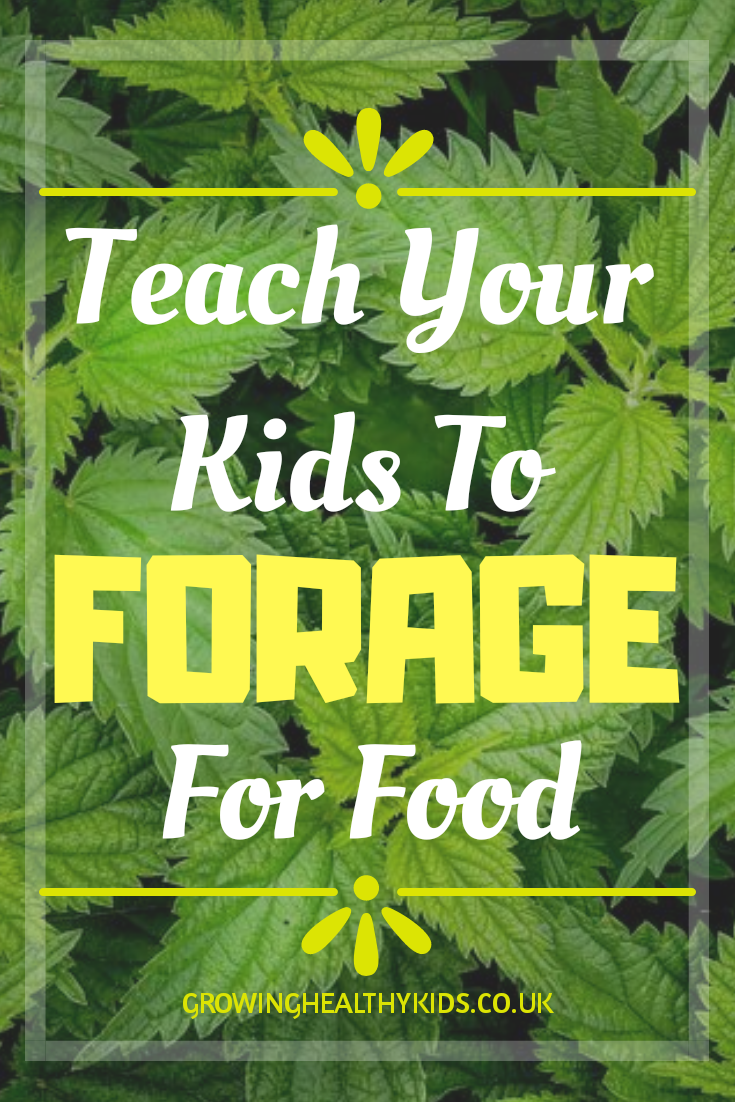
I’ve listed some of our favourites ‘findables’ here. As you can see the best wild edibles to begin teaching your children are the obvious ones.
Berries like Blackberries and easy to find and they taste so sweet. Freshly picked Blackberries always taste better than any shop bought ones.
Edible flowers are another fun idea for kids. We collect bags full of Dandelion’s to make allsorts of recipes from dandelion fritters to beautiful syrup to pour over our ice cream.
Himalayan Balsam
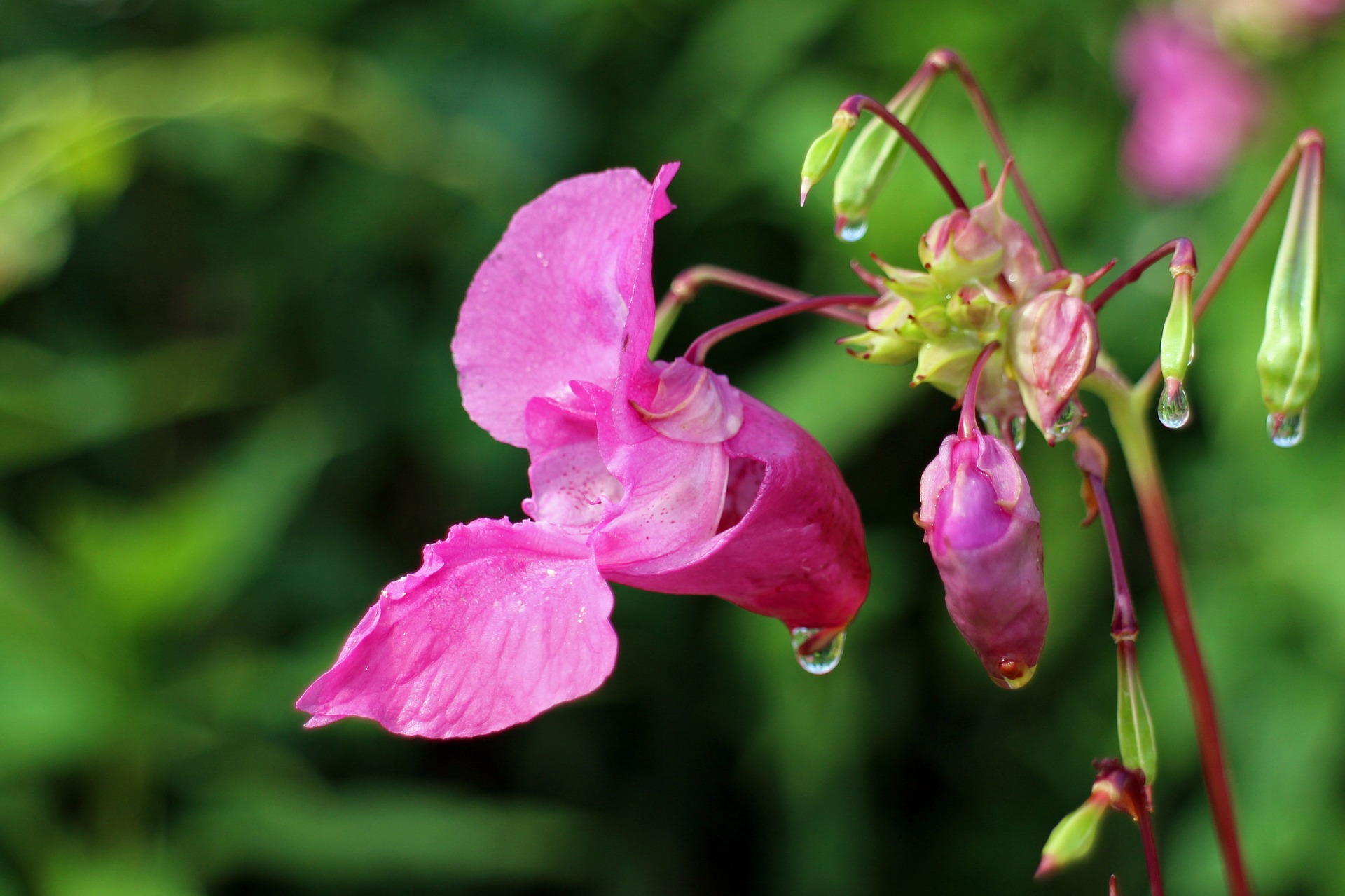
It is an invader from far off climates that has made a successful home here. It covers riverbanks in pink flowers that have an almost aniseed flavours.
We call this plant “popper” for its seeds, they are long pods filled with black seeds that explode at the tiniest touch. The kids love it. The seeds are used to flavour bread and we use the pink flowers to make a syrup which has a shocking pink colour. Find the recipe in my post on Himalayan Balsam.
Elderflowers
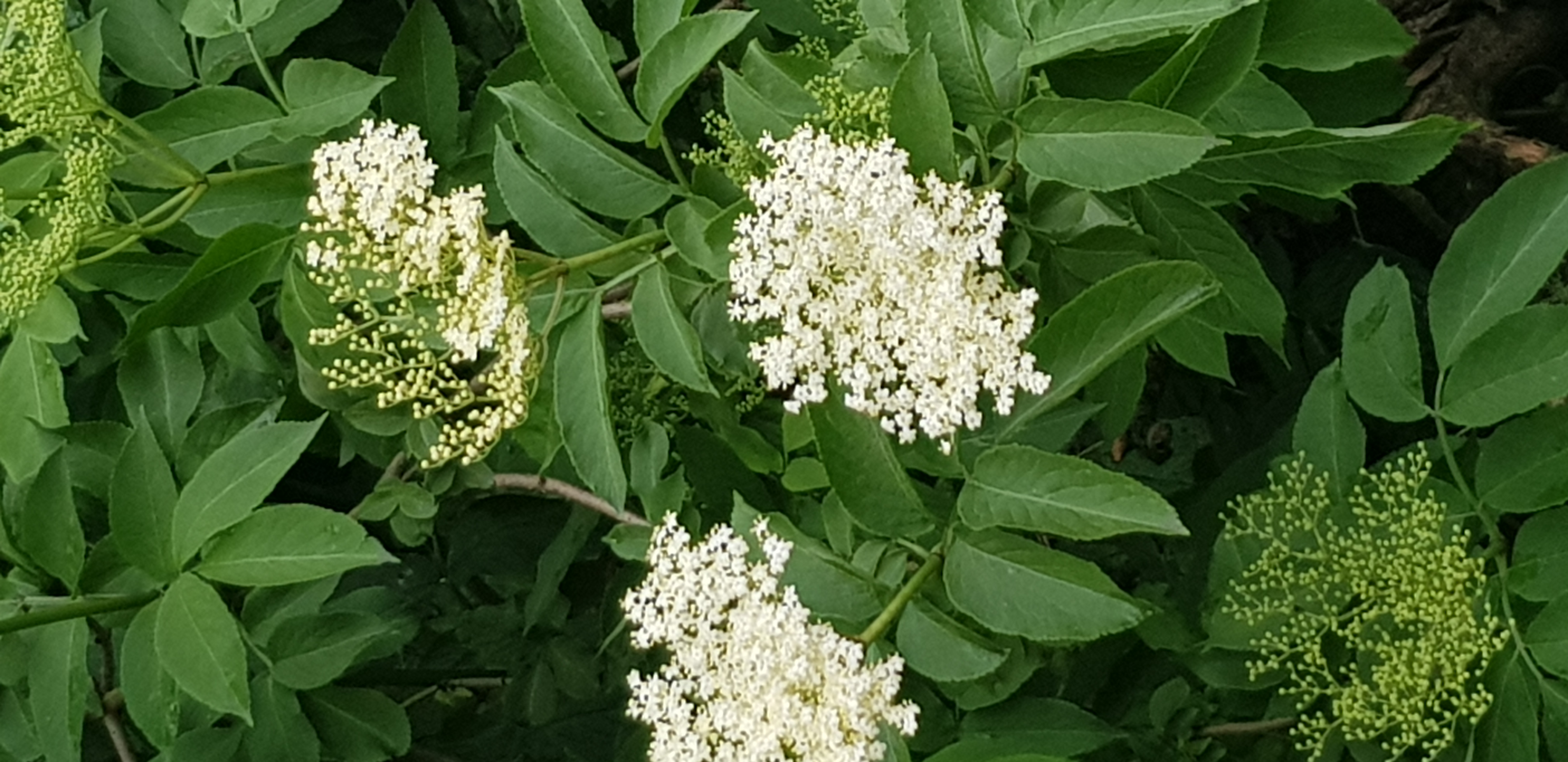
These are one of the best edible treasures of early summer. Whilst we don’t tent to eat them raw (though the flowers can be forked off the stem and added to salads and jellies) a great snack for children is to turn them into fritters! Just mix chickpea flour with water until you get a thick batter and then fry in hot oil for a minute or two. Lightly dust in cinnamon and a small amount of brown sugar or honey.
Blackberries
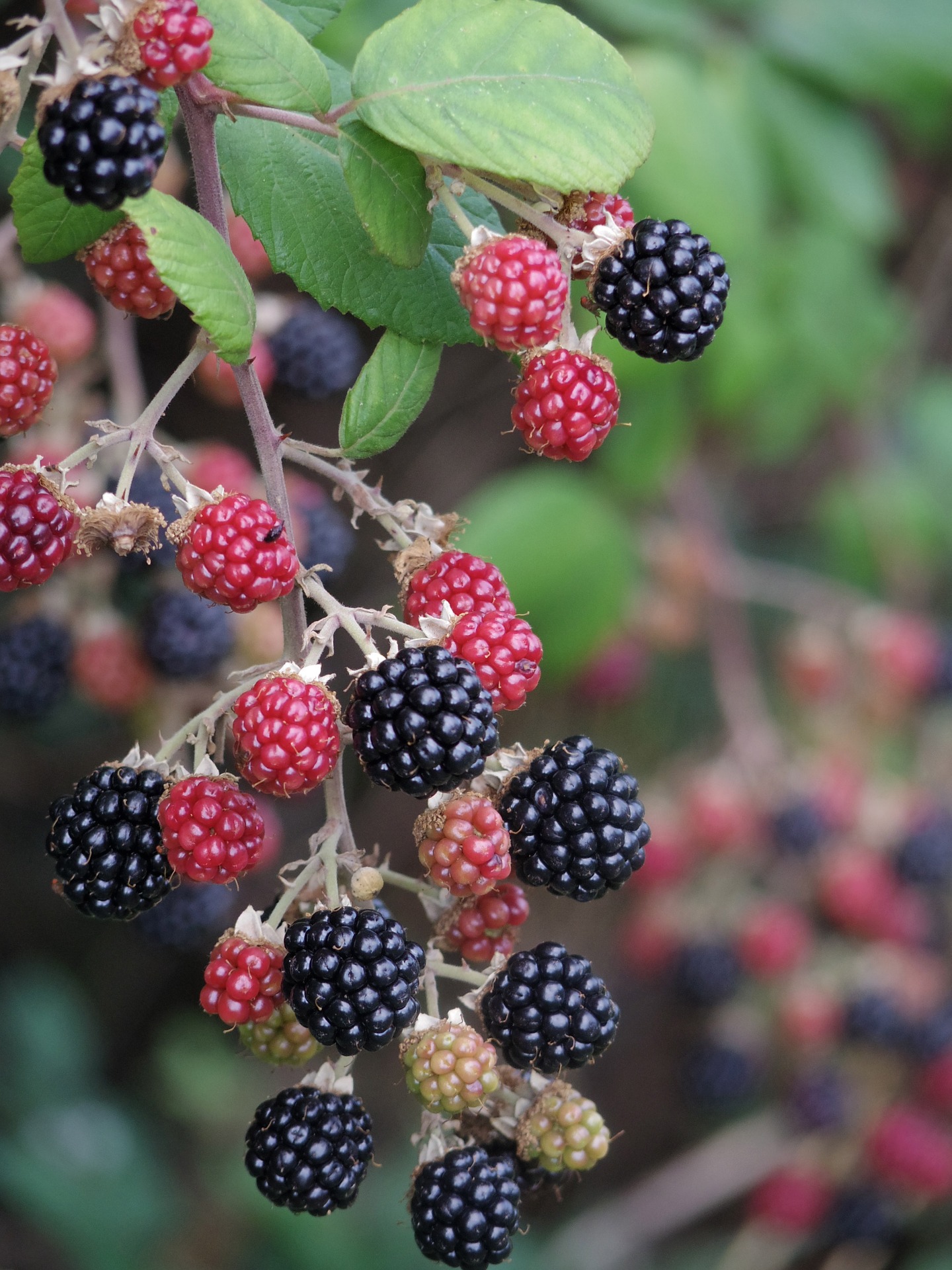
Sadly more and more children in the UK have never popped a ripe Blackberry into their mouth straight from the hedge. Wild blackberries are like the ones you buy, but better. The fruit, which ripens from mid-summer to early autumn, goes from green to red to black. There are so many fun recipes to create with your kids but for me – nothing beats bramble jam on toast. The kids LOVE making their own drinking coridial and ice lollies.
Mahonia berries.
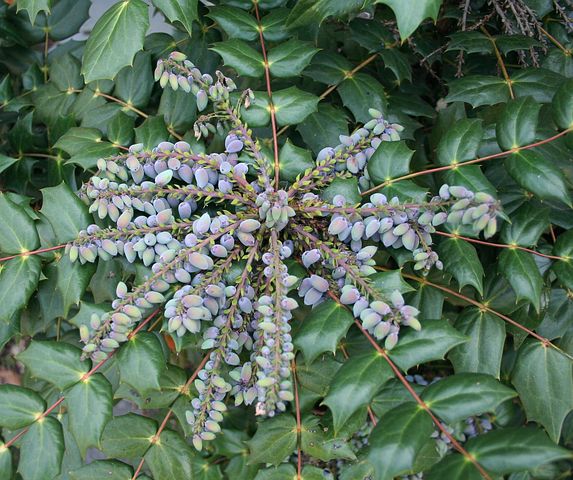
Mahonia berries are everywhere in council plantings at the moment. And they’re not a common edible in this country at least but they are AMAZING!!! They are high in pectin so are great to add to jams. Which is what we do with them, I make an amazing jam which id say is like blackberry jam but nicer!. Its also a good fruit for making cordials with.
Plantain lily
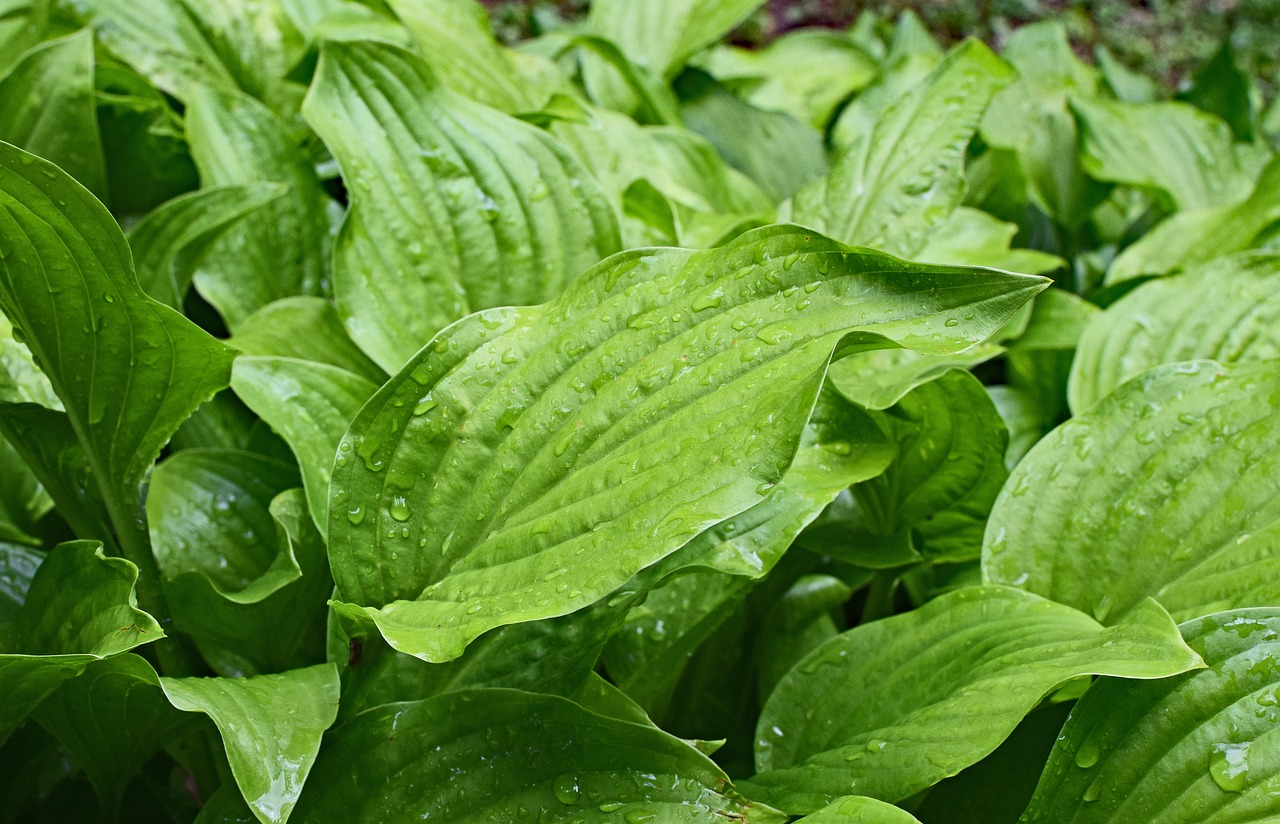
The leaves of this under appreciated plant are very tasty and SO good for you. It grows everywhere here but not many people even notice it. If you ever scrape your finger or get stung by a nettle, crunch some of these up and rub on. They are nature’s cure-all.
Gorse
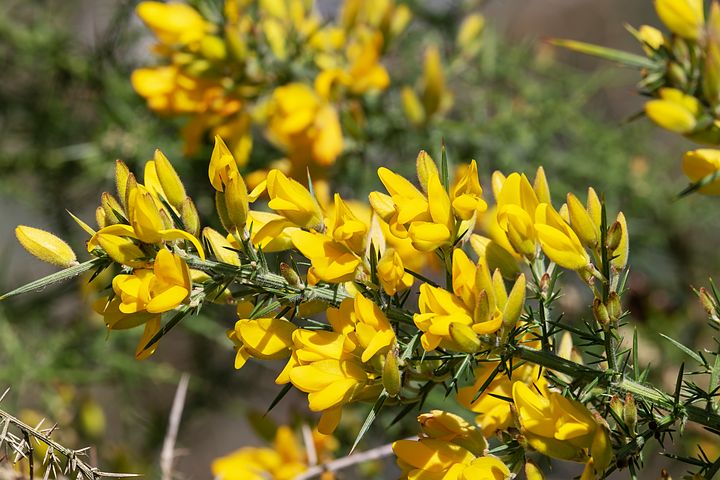
The edible flowers have a coconut smell and a subtle almond taste. A great snack food to nibble on as they are high in protein. Watch out with picking as the stems have sharp spikes.
Here’s a simple foraging guide for the things we find in our area

Right now you are ready, Remember Safety First!
Please go over regularly with your kids that they MUST check every plant with you BEFORE they eat it. If you yourself are in any doubt, then just leave it alone.
Make sure your children understand that not only do they need to be sure that the plant is edible, they also need to ensure that they are picking their edible plants from a safe location – e.g. not from a busy roadside or low down on a path frequented by dog walkers,
Also, it’s worth reminding them not to pick everything from a plant , be responsible and only pick what you need from a few different plants. The plant your picking needs to be able to feed itself to survive and if you rip off all the leaves it can’t do that and you might kill the plant.
Remember the wildlife in your area will also depend on the food you are picking, don’t take more than you need. Always leave some for others.
Encourage your kids to have a try. Children are usually brave and adventurous at trying the plants as they don’t look like ‘food’.
Try to set challenges, like the first to spot a clump of wild garlic wins. Have a taste test with some rotten or sour flavoured objects like vinegar put in for a bit of fun.
So there you go, I hope this guide has helped give you a bit more information on Forging with your kids to get you all outdoors, eating healthy and experiencing the space around you in more detail.
Recipes To Use your foraged plants
Delicious Recipes For 5 Easy To Forage Plants
Getting into foraging is a great way to supplement your diet with free, nutritious food.
The benefits go beyond adding some tasty plants to your pantry – foraging gets you outside in nature in a way that heightens your awareness of your surroundings.
When I first started foraging, I thought, there can’t be that much to eat around here, can there be? Now that I know – I see food everywhere, on every walk I go on, whether it’s in the woods or downtown.
Edible plants surround us; you just have to know what you’re looking for.
But once you know what you’re looking for, you’re hit with another problem.
“Okay, now that I have all these plants, what the heck do I do with them?”
I’ve got you covered.
In this post, we’re going to discuss my Fabulous Foraging Five – these are five plants that are beginner-friendly foraging finds, easy to cook, and easy to find.
You’ll be amazed how many times you’ll look down and find all five of these plants growing within several feet of each other.
Before we go any further, please remember to be careful when foraging.
The five plants we’re going to cook with are all beginner foraging finds, meaning they have few or no look-a-likes that can make you sick.
When you’re just starting, it’s best to get help from someone knowledgeable in edible wild plants. Facebook is an excellent resource for local foraging clubs. It’s also a great way to find out what grows in your area and when.
If you don’t have access to a person, a book is your next best bet. There are many great foraging books. A couple of my favorites:
Recommended
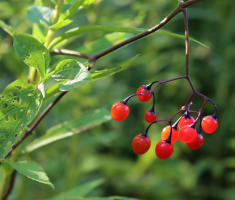
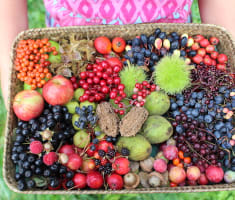
Edible Wild Plants: A North American Field Guide to Over 200 Natural Foods
The Forager’s Harvest: A Guide to Identifying, Harvesting, and Preparing Edible Wild Plants
When it comes to identifying plants, the internet should be your last resource. There is a lot of great information online about foraging and what plants are and aren’t edible. However, the internet shouldn’t be used as your primary source to identify plants. People and books first, the internet last.
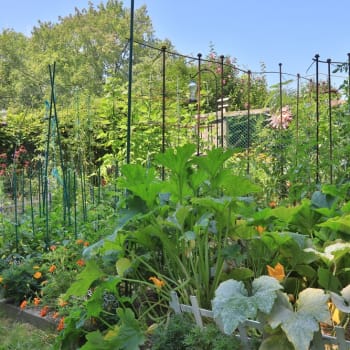
And of course, follow proper foraging etiquette.
Know the area and whether or not it’s been treated with chemicals.
Know if you are allowed to forage in that area and if there are limits.
Forage responsibly, leaving behind plenty for the animals that make that land their home.
Let’s eat some weeds!
1. Stir-Fried Dandelion Greens
Dandelion greens are one of the easiest foods to forage.
First up is the humble dandelion. Most people know that this common flowering plant is edible, but few bother to eat it. There are many ways to use the flowers, but fewer think about eating dandelion greens.
This is one of the first flowers we see each spring. Dandelions are also bees’ first food for the spring, so forage the actual flowers responsibly.
I’m going to show you how to stir fry dandelion greens. Oh my gosh, they’re so tasty!
Ingredients
3-4 cups of freshly picked and washed dandelion greens
1-2 cloves of garlic, finely minced
¼ tsp of red pepper flakes
1 tbs olive oil
Salt and pepper to taste
When picking dandelion greens, I try to find short ones in the early spring. The taller they are and the hotter it gets, the more bitter they become. You can still eat them, of course, they are just less bitter in early spring.
Plunge your freshly picked greens in a bowl or sink full of cold water and swirl them around. Let them soak for a few minutes, so dirt and debris can fall to the bottom. Now spin them dry in a salad spinner (I love this one!) or pat them dry with a clean kitchen towel.
Heat the tablespoon of olive oil over low-med heat in a skillet. I prefer cast iron for stir-frying my greens. Add the garlic and red pepper flakes, gently stirring them, so the garlic doesn’t brown. When the garlic has softened, turn the heat up to medium and toss in your dandelion greens.
Gently pat and stir the greens, so they are all equally coated with the oil. You want to keep stirring and moving them, so they all come in contact with the bottom of the pan. You’re aiming for them to be wilted, but not limp and soggy. This takes between 5-8 minutes.
Transfer to a dish and serve immediately. The slight bitterness of the greens goes so well with the garlic and the kick from the pepper. This is a fantastic and impressive side dish for any meal.
Stir-fried dandelion greens are easy to make, and impressive to serve.
Or lightly chop your finished greens and –
Use them as a pizza topping – seriously, this makes for an incredible pizza!
Toss them with pasta, olive oil, and parmesan cheese.
Add them to a frittata, omelet or quiche.
Once you give these a try, you’re going to be grabbing dandelion greens as often as you see them.
2. Garlic Mustard Pesto
Tender garlic mustard shoots before the flowers open.
Next up is a tried and true classic that shows up on every forager’s table each spring – and with good reason.
Garlic mustard is an invasive species here in the US. It’s one of those plants that you can forage to your heart’s content. Seriously, eat as much as you can!
Garlic mustard is a biennial plant, meaning it will grow for two years. Lucky for us, though, it can easily be found year-round. I’ve picked this stuff out of the snow in the middle of the winter when I wanted something fresh and green to eat.
My favorite way to enjoy it, though is in the spring when it’s in its second year.
I love to pick garlic mustard right before the flowers open. Picked in this way, it’s a lot like eating another one of my favorite greens – rapini or broccoli rabe, and you cook it the same way. It’s so much more tender than rapini, though, and easier to find, and cheaper! Yum.
Today though, we’re going to make pesto with it. Garlic mustard tastes exactly like its name, making it a perfect pesto plant.
Ingredients
¼ cup of pine nuts, almonds, or walnuts (I rarely have pine nuts on hand, so I just use whatever nuts I happen to have in the pantry.)
4-5 cups of freshly washed and destemmed garlic mustard leaves (You can leave the skinny stems that are attached to the leaf, you just want to remove the larger stalks.)
1 cup of freshly grated parmesan cheese
1/3 to ½ cup of extra virgin olive oil
½ tsp of salt or more to taste
Using a food processor, pulse the nuts several times until they resemble large crumbs. Now add your garlic mustard leaves and parmesan. Pulse repeatedly until leaves are thoroughly minced, and everything blends well together.
Continue pulsing and slowly pour in the olive oil. I usually eyeball it, pouring in enough so that the mixture becomes shiny and wet in appearance. Add the salt, pulse several more times and then taste and adjust the salt if necessary.
Store your pesto in an airtight container in the fridge if you aren’t using it right away. Let it come to room temperature before using it. Use or freeze your fresh pesto within a week.
This pesto is almost better than traditional pesto.
Garlic mustard pesto freezes well, so make several batches.
Use it on pasta, spread it on a sandwich, mix it in with meatloaf. Heck, eat it straight out of the jar with a spoon, I know I do.
One of my favorite ways of enjoying garlic mustard pesto is to mix in a heaping tablespoon or two with cottage cheese. Oh yeah, so good!
Because of the prevalence of this invasive species, you can make quite a few batches of this delicious pesto and freeze them to enjoy in the winter months.
3. Stinging Nettle Soup
Stinging nettle is often the first foraging find in spring
Nettle soup is a foraging classic, and for many folks, it’s the first foraged dish of the spring.
This bright green soup is wonderfully nourishing on those chilly days when winter is still hanging around, but green things start to promise warmer days to come.
Always wear gloves when picking and preparing uncooked nettles. Even the new buds can still give you a good zing if you aren’t careful. Once you have blanched the nettles, you can handle them with bare hands. I don’t bother with the gloves in the kitchen, as I find using tongs to wash them and get them into the pot for blanching easier.
Ingredients
4-6 cups of stinging nettle buds
2 tablespoons of olive oil
1 cup of chopped celery
1/2 cup of chopped onion
½ tsp of dried thyme
2 tsp of salt
4 cups of vegetable or chicken stock
5 or 6 small to medium-sized potatoes, washed, peeled and quartered
1 cup of buttermilk or heavy cream
Heat a large pot of water to boiling. While you wait, wash the nettles in a sink full of cold water, using gloves or tongs. Plunge the nettles into the boiling water, keeping them submerged for two minutes. Pour the nettles into a colander in the sink and run cold water over them to stop them cooking.
In a stockpot, heat the olive oil over medium heat. Add the celery and onion and stir occasionally sweating the vegetables until the onion is translucent. Add in the thyme and stir for another minute.
Pour in the stock and the salt and bring to a boil. Once the stock is boiling, add the potatoes. While the potatoes are cooking, finely chop the nettles and add them to the soup. Stinging nettle tends to be pretty stringy, so chop them well.
Simmer on low heat, occasionally stirring for half an hour to an hour. Remove the soup from the heat and stir in the buttermilk or heavy cream. Pulse or blend the soup in a blender, food processor, or with an immersion blender until smooth and creamy. Season to taste with salt and pepper. Enjoy!
This hearty and delicious soup is a great way to welcome spring.
This soup is excellent with crumbled sausage added to it as well. And like most soups, it tastes much better the second day.
4. Purple Dead Nettle Tea
This is one of those plants that is everywhere once you know what you’re looking for. I see it all the time. Again, this is a favorite of bees, so harvest responsibly. It’s hard to over-pick purple dead nettle, though.
Purple dead nettle makes a wonderful tea for spring allergies. This stuff is a lifesaver!
Simply put three or four rinsed heads per cup of water in a teapot and pour boiling water over them. Let the tea steep for five minutes, then strain and serve.
Purple dead nettle tea helps to ease annual allergy symptoms.
I will warn you, served as is, this tea is very astringent tasting. I always add a liberal amount of local honey. It becomes a one-two punch to my allergies!
I begin drinking the tea as soon as I start seeing purple dead nettle, and it dramatically reduces my allergy issues.
If you wish, you can dry the heads of the leaves and flowers to make tea with year-round. Check out our post on ways to dry herbs at home.
And finally…
5. Violet Infused Syrup (or Gin)
Pick the darkest purple violets you can find for a blue syrup.
Yes, making this treat means you have to pull the petals off a bunch of violets, but the effort is worth it when you see the result – bright purple-blue gin or syrup!
You only have a few short weeks a year to enjoy this gorgeous treat, don’t miss it.
Violet syrup is a wonderful addition to cocktails; the taste is light and refreshing and green. It’s like drinking spring!
Violet syrup also makes for a tasty and beautiful soda when mixed with seltzer or club soda. My 12-year-old asks for this treat every spring! It also makes a delicious flavoring for buttercream icing.
Violet infused gin makes an incredible martini or gin and tonic. If you add a twist of lemon or lime, the acid will turn the gin pink!
You’ll need purple violets for the color; I try to pick the most purple ones I can find to achieve the most intense color.
Ingredients
1 cup of violet petals, gently packed (You need to remove the stem and the tiny little green parts at the base of the petals. This is easily achieved by pulling the top petal off first, then the rest of the petals come off quite easily.)
Remove the top petal first, and the rest will come away easily.
For syrup
1 cup of water
1 cup of sugar
Heat the water to boiling, then remove from the heat, add the petals and cover the pan. Let the petals sit in the covered pan for 24 hours. Using a double boiler, heat the water and petals over steam and stir in the sugar.
Bring the syrup to a boil, stirring frequently, then remove from the heat and strain into a clean jar or swing-top bottle. This beautiful syrup will keep refrigerated for six months.
FYI Violet infused syrup or gin make for a beautiful spring sipper.
I hope these recipes make it easier for you to get into eating the wild edible plants growing around you.
Once you taste a few of these, you’ll likely add more foraged food dishes to your table year-round. Edible plants are everywhere.
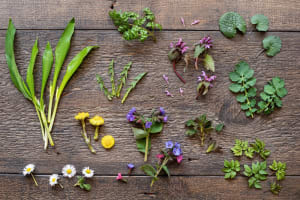
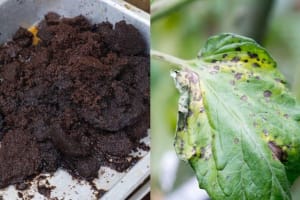
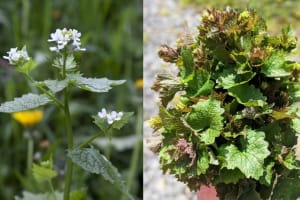
This is a frequently asked question?
Foraging: what to look out for each month
Foraging for wild food connects us with nature and gives us a reason to get adventurous in the kitchen! Here's our year-round guide to sustainable foraging: what's in season and how to prepare and eat it.
This is a frequently asked question?
This is a FAQ description. Add more detail about this service, such as benefits, appearance, components and value
